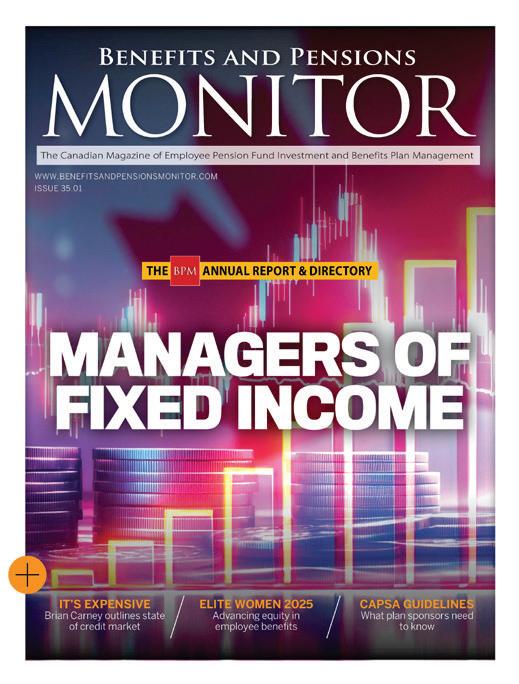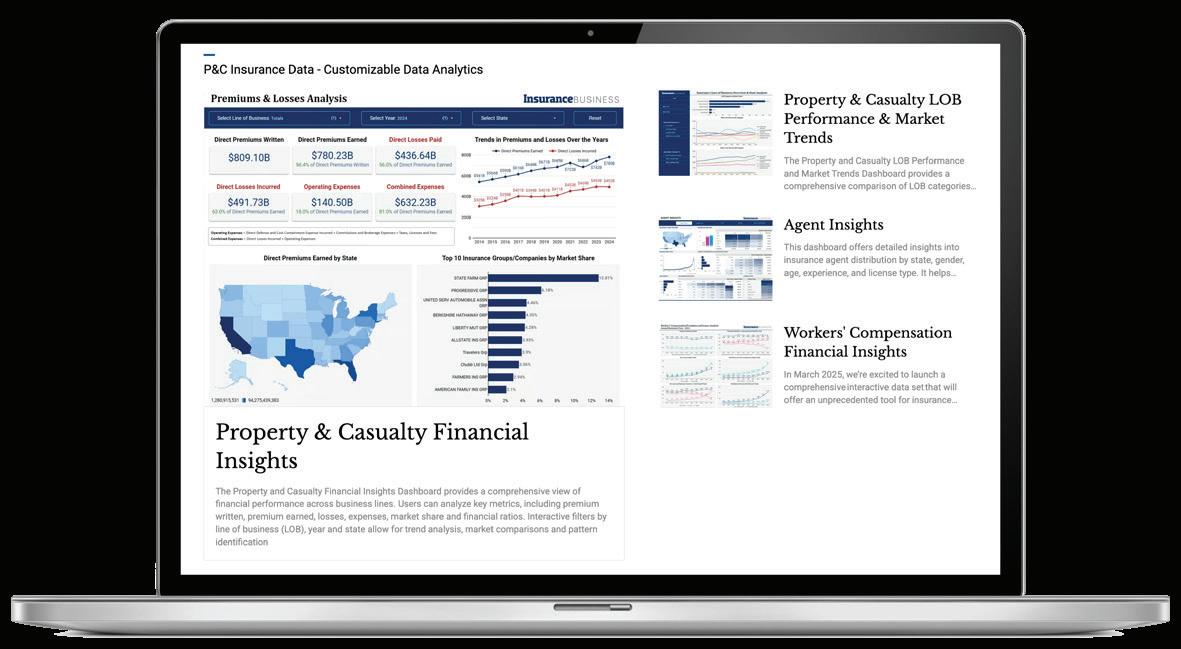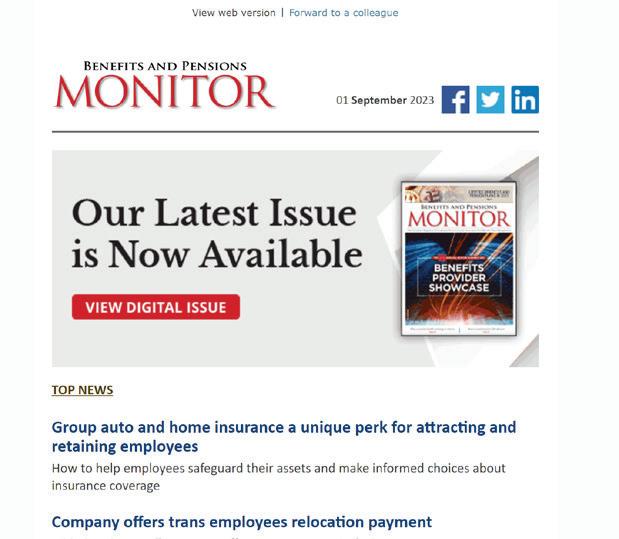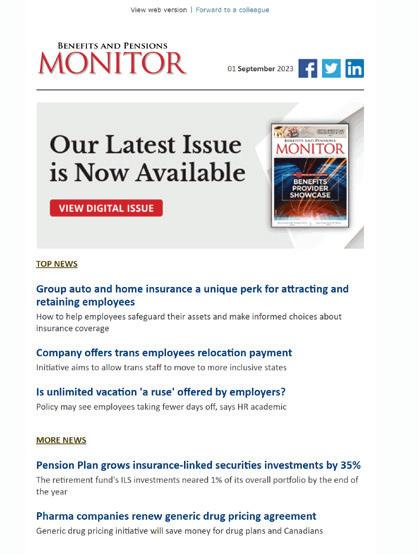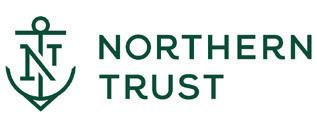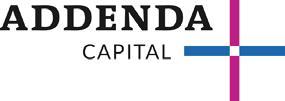






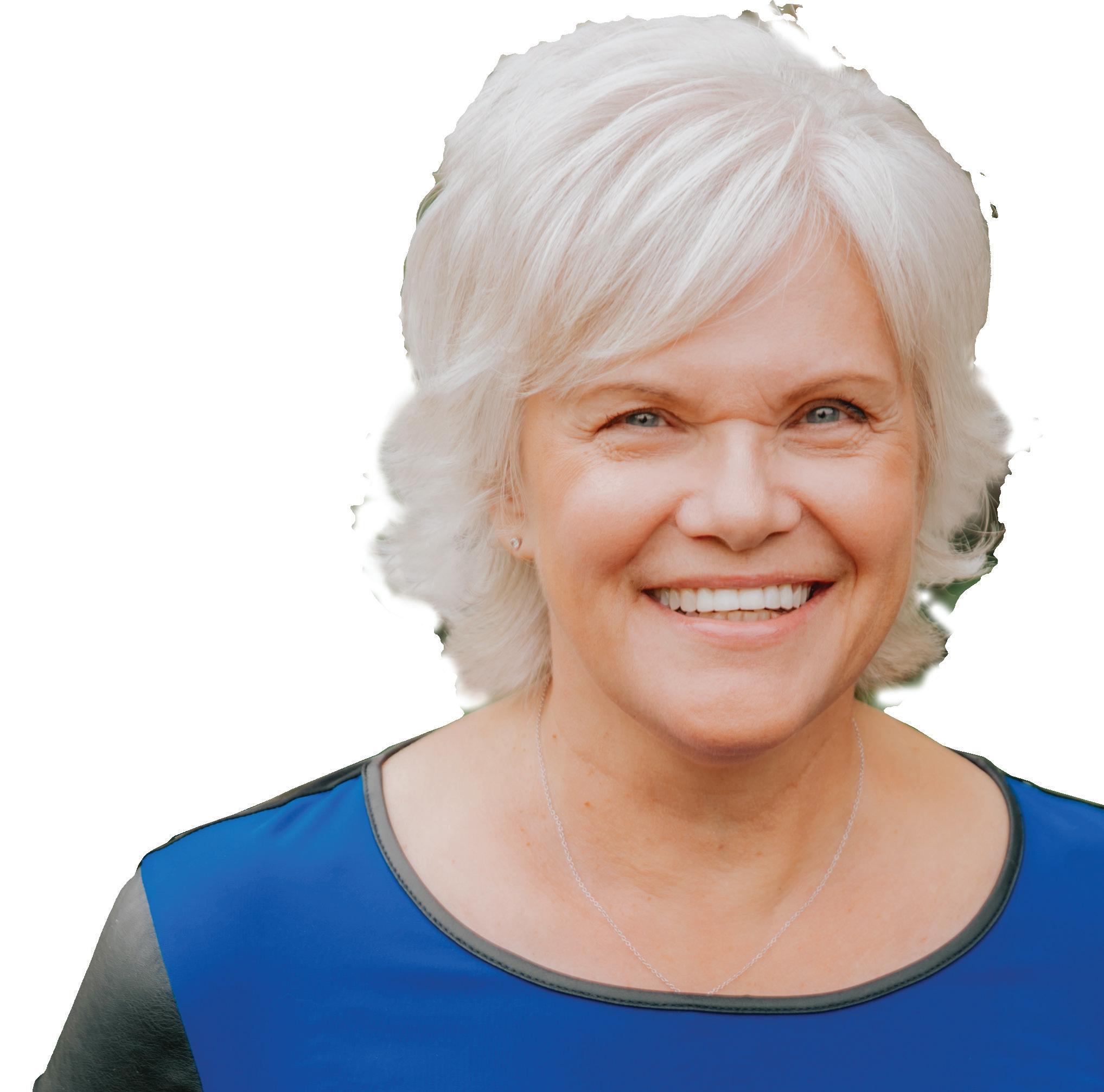

With heavy use of the word “transformative,” the new budget from Canada’s federal government explicitly targets institutional investors. The hope is that a mixture of tax incentives, matching funds, and deregulation will be enough to attract private capital to Canadian major projects, boosting productivity and GDP without massive outlays from the public purse.
One of the chief pools of capital targeted by this budget is the $2.5 trillion in assets held by Canadian trusteed pension funds. Budget 2025 has earmarked $1 billion in cash over three years for the Business Development Bank of Canada to launch the new Venture and Growth Capital Catalyst Initiative, which is meant to mobilize private venture capital by incentivizing pension participation.
This is hardly the massive swing toward economic nationalism that some may have expected from the budget. Nor is it the first time in recent years that government or industry have called on Canada’s public pension funds to invest more deeply in the
Despite budget exhortations, pensions’ responsibility is to their members first Pension funds cannot let the emotions of our moment sway them from their fundamental responsibility to their plan members”
Canadian economy or in Canadian assets. Nevertheless, the tone and tenor of this budget, as well as the new incentives forthcoming for pension investments, should give pension fund managers a degree of pause.
As we saw earlier in the year, tariffs and threats to Canadian sovereignty from the United States have stirred something in Canadians. A tide of economic nationalism has risen, with many boycotting US businesses and products, cancelling trips, or even calling for divestment from US assets. Amid that rising rhetoric, Canada’s pension funds have remained firm in their commitment to the core goal of retirement security for their members. They have participated in the appreciation of US-domiciled assets, both public and private, and articulated the key economic importance of their pension benefits for Canada’s GDP.
Now, as the budget seeks to encourage and incentivize domestic investment by pension funds, it’s crucial that leaders and asset managers stick to the globally diversified approach that has made them so successful. These new incentives need to be assessed and incorporated into plans. New opportunities in areas like critical minerals and infrastructure may also be worth consideration, too, but pension funds cannot let the emotions of our moment sway them from their fundamental responsibility to their plan members. Remember that securing retirement benefits for Canadians is a good in and of itself. If the blinders of nationalism obscure us from that goal, then they must be thrown out.
David Kitai, senior editor
EDITORIAL
Managing Editor
James Burton
Senior Editor
David Kitai
Journalist
Josh Welsh
Senior Sponsored Content Writer Manal Ali
Lead Production Editor
Roslyn Meredith
Production Editors
Christina Jelinek, Tara Tovell
ART & PRODUCTION
Vice President, Production
Monica Lalisan
Art Director Marla Morelos
Designer Noel Avendaño
Production Coordinators
Kat Guzman, Loiza Razon
Customer Success Coordinator
Gail Baes
SALES & MARKETING
Vice President, Global Sales (Wealth) Abhiram Prabhu
Publisher Michael Hughes
CORPORATE
President
Tim Duce
Chief Human Resources Officer
Julia Bookallil
Chief Revenue Officer
Dane Taylor
Chief Information Officer
Terry Szames
COO
George Walmsley
CEO
Mike Shipley
EDITORIAL ADVISORY BOARD
Celine Chiovitti, OMERS
Katie McNulty, CAAT Pension Plan
Greg Hurst, Greg Hurst & Associates
Jim Helik, James Helik Consulting
Tim Clarke, tc Health Consulting
Gavin Mosley, Mosley Group Benefits
Joyce Hum, Neuberger Berman
Anthony Spagnolo, Baillie Gifford

Editorial advisory board members meet informally and are consulted when appropriate to their areas of expertise, interest, or jurisdiction. The members bear no responsibility for the contents of the magazine.
EDITORIAL INQUIRIES
james.burton@keymedia.com
SUBSCRIPTION INQUIRIES tel: 416 644 8740 • fax: 416 203 8940 subscriptions@keymedia.com
ADVERTISING INQUIRIES
Michael Hughes
michael.hughes@keymedia.com
KM Business Information Canada Ltd. 317 Adelaide Street West, Suite 910, Toronto, ON M5V 1P9 tel: +1 416 644 8740 www.keymedia.com
Canada • USA • UK• Australia • New Zealand • Philippines
WEALTH PROFESSIONAL james.burton@keymedia.com T +1 416 644 8740



Benefits and Pension Monitor’s special reports provide an expert-collated resource for the industry when looking for best-in-class partners and the most revered service providers.
The special reports also provide an opportunity to honour the top companies and individuals in the industry for their hard work and commitment to innovation. In 2026, BPM will produce a comprehensive portfolio of special reports covering a plethora of topics and agendas that are top of mind for professionals and most pertinent to the industry.
• 5-Star Technology
• Elite Women
• Hot List
• Rising Stars
• Top Consultants
• Top Employers
If you would like further details on how to be involved, please get in touch via email at sophia.egho@keymedia.com.




Recent data reveals a significant increase in overweight and obesity rates among Canadian adults, with growing implications for health and workplace benefits.
A recent survey reveals how having a professional financial plan impacts Canadians’ confidence in retiring and highlights barriers and preferences in financial planning.
claims are rising sharply, driving up costs and reducing productivity for Canadian employers.
Through inclusive benefits, co-operative principles, and reconciliation in action, Co-operators demonstrates how belonging is built, not declared
WHAT MAKES people stay where they work? For some, it is stability. For others, opportunity. While Co-operators does offer both, for associate vice president, talent management Cindy Nestman, it is also something less tangible yet more enduring: alignment between personal purpose and organizational values.
After 18 years with Co-operators, Nestman has seen how that alignment becomes a source of both loyalty and performance. “Being a cooperative means we do things differently,” she says. “It aligns with my values, and it allows me to see the impact we have on people’s lives, whether it is helping clients build their resilience or recover from disasters or supporting employees to grow.”
That focus on purpose sits at the heart of how Co-operators defines employee engagement. The company sees engagement not only as satisfaction but as a reflection of how connected employees feel to their work and to the organization’s mission.
Evaluating engagement provides more than a measure of morale. It reveals whether people are contributing to shared goals or merely completing routine tasks. It also shows whether culture and people initiatives are creating real impact. In this sense, engagement becomes a strategic lens that distinguishes
high-performing organizations from those that struggle to sustain results.
“If people feel a greater sense of belonging, they are more engaged,” Nestman says. “Engaged employees create better results, better services, and a stronger client experience.”
Benefits that reflect a deeper understanding of people
Inclusive benefits carry weight only when they reflect genuine understanding. At Co-operators, they are not treated as

nizes that employees define family, health, and identity in different ways. Coverage for family-building, gender affirmation, and traditional Indigenous healing reflects that awareness. Each policy decision signals that personal circumstances are not peripheral to the workplace − they are part of it.
This perspective shifts the question from “What do benefits provide?” to “What do they say about us?” Benefits become a language through which values are expressed and tested. When that
“When employees recognize themselves in the systems that support them, they bring their full selves to what they do”
Cindy Nestman, Co-operators
a tool for recruitment or retention but as proof that people’s realities are seen and respected. “Inclusive benefits are a key ingredient for employees to feel that Co-operators is serious about their wellbeing and inclusion,” says Nestman.
That seriousness shows in the details. The company’s benefits program recog -
language is authentic, employees do not need to be convinced of inclusion; they experience it.
Nestman sees the results in people’s response to their work. “When employees recognize themselves in the systems that support them, they bring their full selves to what they do,” she says. “That’s what builds
engagement, it grows from recognition, not instruction.”
In that sense, Co-operators treats benefits as a kind of cultural architecture: practical, visible, and enduring. They form part of the structure that holds the organization’s purpose in place. Engagement follows not from programs or campaigns but from the steady reinforcement of a simple truth − that belonging is built through evidence, not aspiration.
Co-operators’ approach to engagement and employee well-being is guided by its IDEA strategy, which stands for inclusion, diversity, equity, and accessibility. The framework informs everything from recruitment to benefits planning and ensures that policies reflect the varied realities of the workforce.
Each year, the company reviews its benefits offerings to confirm they remain inclusive, flexible, and competitive. Nestman describes the process as aligning the organization’s social purpose with the practical needs of employees. “People need security, belonging, and self-fulfillment,” she says. “An effective benefits program supports all of those.”
Recent enhancements illustrate how the IDEA strategy operates in practice. Co-operators introduced family-building benefits, gender-affirmation coverage, and Indigenous health benefits designed through consultation with employees. The Indigenous coverage was added after hearing that traditional healing and ceremony were essential to many colleagues’ well-being.
“We made sure our benefits include access to traditional Elders and Healers,” Nestman explains. “It shows employees that their identity and culture are respected.”
The results are visible in engagement data. Indigenous employees now report higher inclusion and belonging scores
than company averages, evidence that benefits designed through an inclusion lens can directly influence connection and performance.
The company’s reconciliation and inclusion work is built on three pillars of action: respecting Indigenous ways within its operations, embracing reconciliation as a cooperative and investor, and fostering partnerships with Indigenous communities. Each pillar is supported by measurable goals and ongoing dialogue.
“It takes strong, steady commitment to learn and unlearn,” Nestman says. “Building
Sponsored by

tently rank among the top reasons people choose to join.
These measures reflect more than compliance. They demonstrate that inclusion, when consistently applied, becomes part of organizational performance rather than a separate program.
At Co-operators, engagement is inseparable from the organization’s cooperative roots. Its values − responsibility, integrity, and inclusion − shape not just what it does but how decisions are made. The company’s internal message, “Who you are matters here,” captures that belief and sets a standard for leadership behaviour.
“It takes strong, steady commitment to learn and unlearn. Building trust takes patience and consistency, but it is through that process that we find shared ground”
Cindy Nestman, Co-operators
trust takes patience and consistency, but it is through that process that we find shared ground.”
Progress is assessed via multiple indicators. The annual engagement survey tracks inclusion across demographic groups, while the IDEA Index focuses on two key statements: whether leaders value different perspectives and whether employees feel they belong. Most diverse groups meet or exceed company-wide averages.
External validation comes through the Global Diversity, Equity & Inclusion Benchmarks, showing that Co-operators continues to move closer to best-practice levels internationally. Recruitment feedback echoes those findings. Culture and commitment to inclusion consis -
Rather than viewing engagement as a top-down initiative, Co-operators treats it as a shared outcome that emerges when employees see meaning in their work and in each other. The company’s cooperative structure reinforces that idea by encouraging collaboration and long-term thinking over short-term targets.
This principle is evident in the firm’s truth and reconciliation strategy. Developed through consultation with Indigenous employees and communities, it draws from the Indigenous concepts of knowing, being, and doing. The framework ensures that reconciliation is embedded in daily practice, not left as symbolic intent. For Nestman, it represents the cooperative spirit in action, translating purpose into tangible progress.
How BMO Global Asset Management partners with Indigenous nations to turn financial capacity into long-term self-determination and shared prosperity
IN THE emerging architecture of Indigenous prosperity, land and capital remain vital, but governance can be key to sustaining both. Across Canada, Indigenous nations are managing growing trust funds tied to land settlements and resource participation. Yet the defining question is no longer how to grow these assets – it’s how to protect and translate them into lasting value for citizens today and the generations that follow.
At BMO Global Asset Management (GAM), that question has guided a shift from conventional investment work to a broader mission: building the institutional systems that turn capital into continuity. “Wealth could extend beyond an individual,” says Leanne Flett Kruger, director of strategic relationships, who is of Swampy Cree and Red River Métis Nations heritage. “It can be about supporting families, communities, and the generations that follow.”
For Kruger, the responsibility is both professional and personal. She has spent decades working on the front lines of Indigenous economic development and trust creation, advising on governance frameworks that preserve community capital. “When a community receives a settlement, it can make an immediate difference, but its purpose also extends to strengthening the future,” she says. “It honours the past and secures the future.”
Her colleague Vincent Au, director of institutional distribution at BMO Global Asset
Management, arrived at the same mission through a different route. His career in institutional asset management eventually converged with BMO’s Indigenous banking relationships, where he saw how investment discipline could help communities transform new financial capacity into long-term self-determination. Au says, “As nations become wealthier, they look for expertise and experience that align with their values and priorities.”
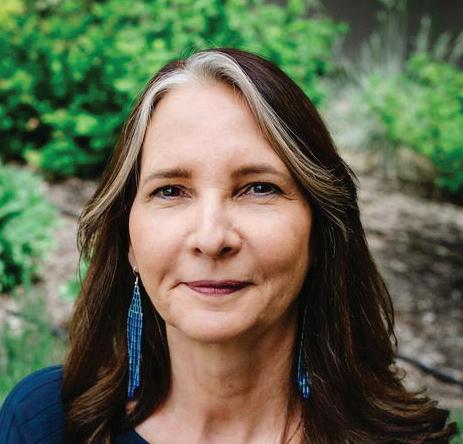
The funds can be transformative − most Indigenous trusts are written to protect capital and define how income is spent. “You are just spending the income or following sustainable withdrawal rates to make sure it will be there for future generations,” Kruger explains. Many trust documents also link spending to clear community priorities such as housing, education, and land stewardship.
“When a community receives a settlement, it can make an immediate difference, but its purpose also extends to strengthening the future. It honours the past and secures the future
Leanne Flett Kruger, BMO Global Asset Management
For many Indigenous nations, the foundation of that structure begins with settlement funds that can be decades in the making. These proceeds are often tied to land or resource claims, and they carry the weight of generations who fought for redress. “The Elders who worked for these settlements may not be here, but their descendants will live with the choices made today,” Kruger says.
That level of discipline is a necessity born of structural inequities. The 2023 First Nations Financial Management Board Pre-Scoping Study found that Indigenous businesses receive roughly one-tenth of the financing available to comparable non-Indigenous firms. Nearly 45 percent report difficulty meeting loan qualifications because standard lending models do not reflect Indigenous ownership and governance realities.1 The report concluded that
this gap “limits the ability of Indigenous economies to scale” and restricts access to opportunities in infrastructure, housing, and enterprise development.
“These barriers are exactly why governance matters,” Au says. “It’s not just about investment performance. It’s about building capacity and align wealth management with their identity and long-term goals.”
BMO’s Indigenous banking and trust partnerships were designed to address that need. The model integrates banking, trust administration, and asset management under one platform so that investment policy, liquidity, and governance are coordinated from the start. “We call it One Client, One BMO,” Au says. “We bring the same access to markets, the same discipline, and the same respect that large pension funds receive.”
BMO’s Indigenous banking and trust teams now support over $7 billion in business with Indigenous customers. That footprint reflects decades of collaboration, underpinned by open dialogue, governance education, and shared decision-making that link investment with cultural and economic renewal.
BMO’s Indigenous client work begins with listening. Before a single dollar is allocated, the team works with leadership and trustees to define what the funds are meant to achieve. “You look at how much money you are going to need for housing or education,” Kruger explains. “Then you reverse engineer what kind of asset mix will support that.” The portfolios that emerge are designed to be resilient, not speculative.
Education plays a central role. Rather than only deliver a quarterly report, the team organizes workshops that explain diversification, market cycles, and sustainable withdrawal strategies. As understanding grows, communities gain confidence to explore new opportunities,
including alternative investments that can lower total portfolio risk. “We have seen our clients become more comfortable with diversification,” Kruger notes. “It allows them to align growth and preservation in a way that fits their long-term plan.”
Housing remains one of the most urgent needs in many communities, yet standard mortgage structures do not apply because reserve lands cannot be used as collateral under the Indian Act. BMO was the first bank to create an on-reserve housing program that adapts to that reality. 2 The institution has also expanded credit programs for Indigenous entrepreneurs who would otherwise be excluded by conventional models. “Access to capital is something all financial institutions should strive to improve,” Au says. “Our goal is to innovate in ways that help communities build capacity from within.”
The next seven years, the next seventy
Within Indigenous wealth circles, the idea of planning for seven generations is a guiding philosophy. Au interprets it as an investment principle. “What happens in the next seven years can definitely impact what happens in the next seventy,” he says. “The portfolios must endure and adapt through many market cycles.”
Governance and education underpin that endurance. Each trust defines its own spending limits, oversight structure, and reporting expectations. By embedding those practices within their own systems, Indigenous nations are proving that sound governance is not imported from outside institutions but built from within.
That cultural and structural integration is what both Au and Kruger see as the real legacy of this work. “Our goal is to move from being financial advisors to being partners with the leadership circle,” Au says. “When a community sees us as an extension of their team, that is when the partnership really works.”
Sponsored by

For Kruger, the measure of success is simple. “These settlements were fought for over generations,” she says. “We’re responsible for equipping the community with strategies to achieve their goals.”
The next phase of Indigenous economic development will depend less on new funding than on the institutions that manage existing wealth. The FNFMB Pre-Scoping Study estimates that the collective value of Indigenous trusts and settlements now reaches into the tens of billions. The stewardship of that capital, its governance, transparency, and capacity to generate community benefit will determine whether this wealth closes social and economic gaps or reinforces them.
At BMO Global Asset Management, the mission is to ensure the former. Trust deeds protect capital. Portfolios serve defined purposes. Education builds confidence. Together, they form a structure that converts capital into continuity and intention into impact.
References
1. https://fnfmb.com/sites/default/ files/2024-01/2023-10-16_idb_pre-scoping_ study_final_report.pdf
2. https://ourheritagebmo.com/exhibit/ bmos-indigenous-partnerships-andprogress-our-history-and-impact/
Disclaimer:
The viewpoints expressed by the author represent their assessment of the markets at the time of publication. Those views are subject to change without notice at any time. The information provided herein does not constitute a solicitation of an offer to buy, or an offer to sell securities nor should the information be relied upon as investment advice. Past performance is no guarantee of future results. This communication is intended for informational purposes only.
This article is for information purposes only. The information contained herein is not, and should not be construed as investment, tax or legal advice to any party. Particular investments and/or trading strategies should be evaluated and professional advice should be obtained with respect to any circumstance.
BMO Global Asset Management is a brand name under which BMO Asset Management Inc. and BMO Investments Inc. operate.
“BMO (M-bar roundel symbol)” is a registered trademark of Bank of Montreal, used under licence.
DENISE BALCH is no stranger to the benefits landscape. From her start at a now-defunct insurer on Bay Street to her current role as president of Connex Health, she has certainly seen the industry’s largest shifts.
But she argues it hasn’t shifted fast enough. According to Balch, adaptability is one of the industry’s greatest shortcomings. And while COVID-19 briefly forced a digital awakening, she’s skeptical about whether that momentum has held.
“We know that the industry can change, but it seems to have largely settled back into a resistance to change, even if there are opportunities that would benefit most stakeholders, and I think that that’s challenging. With the speed of new technology solutions and more AI applications available to insurers, advisors, and consultants, the industry needs to be more adept and adaptable than it has been in the past. Those who adapt will be the ones who will not only survive but thrive,” says Balch.
She traces that resistance to change back to structural shifts that began two decades ago. Following deregulation and consolidation, fewer insurers have come to control large segments of the market as most are publicly
traded and focused on shareholder returns, which she believes drives a strong aversion to investing in innovation and embracing risk.
“There is a reluctance to do anything that’s going to rock the boat except at the most basic levels,” she adds.
Balch now spends much of her time providing guidance to those organizations
Balch believes one of the most overlooked issues in the group benefits space is the underfunding of the public healthcare system, particularly physicians and hospitals, and the lack of industry conversations around its implications for the private sector and group benefit plans. Drawing from her experience as chair of the Temiskaming
“The industry needs to be more adept and adaptable than it has been in the past. Those who adapt will be the ones who will not only survive but thrive”
on the fringe of the benefits industry or working on industry initiatives she believes in, like launching the Prior Authorization Framework and Accreditation (PAFA) program. She’s perhaps best known for organizing insightful webinars and seminars on latest trends in the benefits landscape.
“It’s a constant challenge to make sure that we’re bringing topics to advisors, insurers, and other stakeholders that are not only of importance but also of interest,” admits Balch.
Hospital in New Liskeard, Ontario, she warns that with funding shortfalls to public healthcare systems, particularly in Ontario, the quality of care is in critical condition.
“The sector is significantly underfunded to the point where it’s almost in crisis mode. If we don’t address those public sector funding issues, then there are going to be repercussions in the employee benefit space,” notes Balch, also highlighting the growing use of publicly funded private clinics and
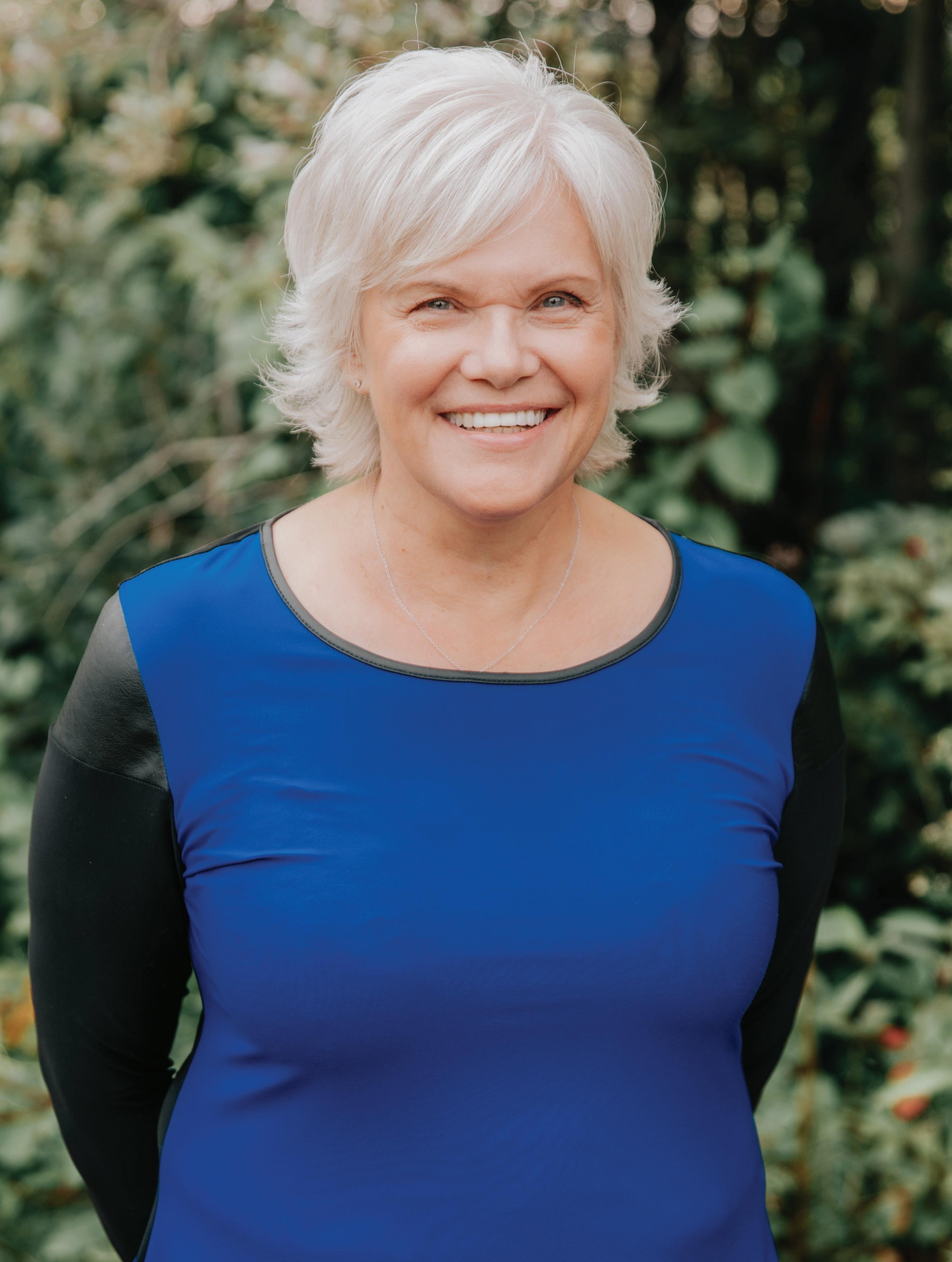
Name: Denise Balch
Title: President
Company: Connex Health & PAFA
Age: 63
Years in the industry: 40
Birthplace: Toronto, Ontario
Most recent read: The Lives of Lee Miller by Anthony Penrose
Career highlight: Building and sustaining my business on my own terms
What do you want to see change in the benefits space?: To see the prior authorization claims process become more efficient to improve timely access to patient medications
What do you want to achieve before you retire?: To see the work I’m doing to improve prior authorization become an industry standard
reviews of funding models as signs of a system under pressure.
When asked where she sees the landscape going in the next decade, Balch says she believes the industry is at a turning point, particularly in how technology and automation can reshape longstanding processes and delivery efficiencies. She’s adamant that AI and digital platforms will become fully integrated into the system, often without users even realizing it.
One area that she expects to undergo a major shift is the prior authorization process for specialty drugs, which she describes as outdated and inefficient, adding that in the future, technology, including AI, will play a
options” she says, noting that plan sponsors should also be more assertive.
Balch further highlights growing delays in adding new specialty drugs to formularies as a critical concern. If private plans continue to lengthen the time to formulary list, moving close to the timelines of public systems, she warns, it will raise serious questions about the value of employersponsored coverage.
She hopes her work has left a broader impact on the industry. Her long-standing advocacy of common-sense approaches to benefits and employee health, including prior authorization processes, have been brought together through a new payer accreditation
“We need to better educate our plan sponsors, or they need to better educate themselves, on what the current issues are in employee benefits and advocate for more options”
key role in prior authorization adjudication. She’s also hoping for broader reforms in drug pooling, particularly for smaller groups, ideally moving toward a simplified national model to replace complex, inadequate solutions that exist today.
According to Balch, plan sponsors are falling behind when it comes to understanding and advocating for improvements in employee benefits. She asserts that lack of engagement is starting to show, not just in understanding the challenges of prior authorization and pooling but in other areas of plan design as well.
“We need to better educate our plan sponsors, or they need to better educate themselves, on what the current issues are in employee benefits and advocate for more
initiative launched under her nonprofit, an initiative she takes pride in.
“To try and influence change to make the industry better is very important to me,” says Balch.
While working at one of the first patient support programs, she became involved in a “medication cabinet clean up” in the early 1990s that involved promoting the return of unused and expired medications to pharmacies in Hamilton. As a result of the findings from this initiative, Balch gained keen insights into the value of realworld evidence studies for understanding how to motivate plan members to manage their own health and how to foster change in behaviours.
When the company she was with at the time declined to support her ideas around
» Private drug plan costs grew by 7.3% in 2024
» Total claimants grew by 3.5% in private plans, which represented 48% of the total growth for 2024
» The average cost per claim grew by 2.8% in 2024
» Patients on average increased their number of claims in 2024 by 0.9%
» 72% of costs and growth were driven by chronic use drugs
» 70% of drug costs and the majority of cost growth were driven by drugs under $10,000 per year, while drugs over $25,000 per year remained flat in 2024 at 12.7%
workplace health projects, they told her to pursue them on her own. That marked the beginning of Connex Health, which this year celebrates its 25th anniversary.
But the foundation for her independent work started even earlier, with the launch of the Benefits Breakfast Club, now the Connex Benefits Network. She was driven in this pursuit by her desire to learn more about healthcare to impact health at a population level.
“I knew that the people that I wanted to learn from wouldn’t come and talk to me. I thought, ‘Well, if I get a group of advisors together … the experts will probably come, and so will advisors.’ Advisors and insurers came out, but so did most of the large employers in Hamilton,” she says. “I knew then that I was on the right track.”
Employers can make a meaningful difference in women’s health by addressing the “3 M’s,” writes NFP’s Murray McGlynn
DESPITE MAKING up over half of Canada’s population, women continue to fall through the cracks in the healthcare system and benefits plans due to a historical lack of medical research and understanding of their unique health needs.
Employers can’t readily change the healthcare system or the portion of clinical research and development devoted toward women’s health, but they can make some important changes to the benefits they offer to help address the often overlooked or downplayed health needs of working women. The ROI of doing so can be significant, helping companies gain a competitive advantage by attracting, retaining, and empowering the best talent, improving overall employee well-being and engagement, reducing costs related to absences and leave, and building a culture of inclusivity in which all people thrive.
One critical area where employers can make a meaningful difference in women’s health is by addressing the “3 M’s” –menstruation, maternity, and menopause. These life stages profoundly shape the health, wellbeing, and workplace experiences of women and people assigned female at birth. Each brings distinct

physical, emotional, and social challenges, yet they remain largely overlooked or misunderstood in most professional environments.
The 3 M’s are not fringe issues; they are experiences and major life stages that deserve to be destigmatized and normalized through thoughtful group benefits
The question for employers is whether their benefits plans and policies have the features and flexibility to meet women’s needs, which can differ dramatically from those of their male counterparts
design and workplace support. When left unaddressed, these life stages can affect attendance, productivity, and career advancement. Women in today’s workforce simply deserve more than the one-sizefits-all approach that many benefits plans still offer.
According to a recent survey by RBC Insurance, 75 percent of Canadian women want or need benefits that specifically support women’s health, including coverage for services related to fertility and menopause.
The question for employers then is whether their benefits plans and policies have the features and flexibility to meet women’s needs, which can differ dramatically from those of their male counterparts. Those needs are diverse and addressing them appropriately through group benefits requires a shift in perspective to gain a broader, more inclusive understanding.
Choice and flexibility are the new architects of benefits plan design, and employers are increasingly turning to more flexible coverage options such as Health Spending Accounts (HSAs) and Wellness Spending Accounts (WSAs) to help employees use their plans in a way that best aligns with their unique values and circumstances. Spending accounts allow for the ultimate in personalized healthcare and life-staged support.
Spending accounts can significantly benefit women by providing financial flex-
ibility and life-staged support for a range of needs, including health, wellbeing, and personal development. These accounts allow women to allocate funds toward expenses like fitness, mental health services, family planning, and menopause management, which can positively impact their overall well-being and career progression.
Here are some of the ways spending accounts can benefit women:
Enhanced health and wellness
• Physical health: gym memberships, fitness classes, personal training, and sports equipment that promote physical fitness and a healthy lifestyle
• Mental health: therapy, mindfulness retreats, and mental health apps to address mental wellbeing and stress management
• Reproductive health: health products such as prenatal vitamins, and access to maternity services like doulas, midwives, and classes
• Holistic wellness: acupuncture, massage therapy, Indigenous health, and other holistic treatments that promote overall wellbeing
Support
• Family planning/motherhood: help with expenses for fertility-related procedures and drugs, maternity care, and childcare
• Caregiving: dependent care, including childcare and eldercare, to ease the
burden of caregiving responsibilities that often fall on women
• Menopause management: specific support for menopause-related needs, such as coaching
Personal and professional development
• Professional courses and certifications: funded courses, workshops, and certifications that enhance skills and career advancement opportunities
• Language learning: pay for language learning classes or subscriptions, opening doors to new opportunities and cultural experiences
• Personal coaching: covered costs for coaching sessions for career development, personal growth, or life transitions
Women’s health is distinct and multifaceted, and taking proactive steps to support and prioritize it in the workplace isn’t just a wellness issue – it’s a cultural, leadership, and business imperative. When women have access to meaningful, flexible benefits, they’re able to bring their full selves to work, resulting in a win-win for them and their employer.
Employers that lead the way in addressing and prioritizing women’s health will gain a competitive advantage through the retention and loyalty of their female employees. Spending accounts are a simple way to offer flexible benefits that can support specific elements of women’s health while keeping benefits plans costs low and predictable.
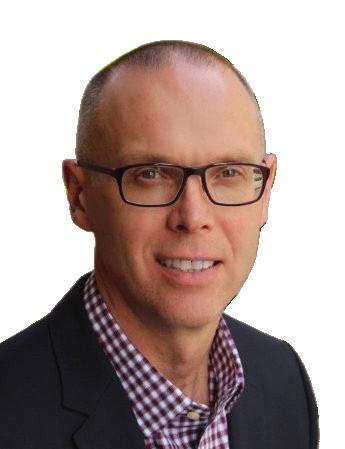


Fidelity Investments’ private equity experts say public market volatility and tariff uncertainty are creating timely opportunities in secondaries and long-term private equity exposure
HEADING INTO 2025, private equity dealbuying activity was expected to increase. The economic environment was set to improve, financing markets were supportive, and government policy was favourable. Confidence was also boosted because private equity firms had raised significant funds in the past few years that had not been deployed, improving buying capacity. The market also expected sellers to come to market in 2025 and increase the volume of exits. Due to the sluggish deal-making environment that had started in late 2022 and the delayed exit activity in earlier investments, private equity funds felt pressure to improve liquidity from their older funds. However, the optimism and confidence were misplaced as tariffs rocked the world and shook the markets.
Since the first quarter of 2025, the buyout markets have been adjusting to a new, uncertain environment due not just to tariffs and volatile equity markets but to government policy and spending as well. The uncertain environment put a hold on new deal activity and has been reversing the upward trend in volumes seen in the first quarter; this could lengthen hold periods, slowing down liquidity coming back from legacy private equity investments. Despite these potentially unfavourable outcomes, there are reasons to be positive.
“Periods like this don’t stall private equity,” says Michael Bailey, head of private equity
multi-strategy at Fidelity Investments in Boston. “The buyout markets are adjusting to a new, more unpredictable backdrop, but that creates opportunity. You’re seeing portfolio companies navigate through the disruption and lean into situations like carve-outs or take-privates.”
Private equity firms are looking for opportunities in this market, including investments that may be favourable during times of volatility. Bailey expects new investment activity to be steady in the small buyout and growth equity segments, where indi-
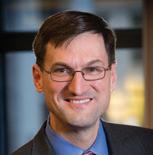
sentiment, private equity can take a longerterm view. Managers aren’t forced to transact in real time. They can hold through uncertainty, work with management to improve fundamentals, and exit when conditions are more favourable.
“The private equity model has historically helped the asset class outperform public equities,” says Bailey, who previously managed private equity for Massachusetts Pension Reserves Investment Management Board and now leads Fidelity Investments’ multi-strategy private equity platform
“The private equity model has historically helped the asset class outperform public equities”
Michael Bailey, Fidelity
vidual company attributes tend to outweigh macro factors.
Private equity’s investment model stands apart from public markets, especially in the face of macroeconomic uncertainty. Rising tariffs and unstable equity markets have complicated matters. Yet these same pressures have helped spotlight the strengths of the asset class.
Unlike public equities, which are subject to near-constant price discovery and market
alongside Melissa Mendenhall, portfolio manager. Mendenhall, before joining Fidelity, led private equity and private credit research at NEPC, advising pensions, foundations, and private wealth clients.
Bailey and Mendenhall bring extensive experience and multifaceted perspectives to a private market environment where liquidity considerations and thoughtful diversification are important aspects of investment decision-making.
Private capital is, by its nature, illiquid. Investors typically commit to a fund with the understanding that capital will be locked up for years, with limited ability to exit before distributions begin. Staying the course with illiquid private equity allows for long-term wealth creation and reduced portfolio volatility. To provide more flexibility, two liquidity-focused strategies have gained traction: LP-led secondaries and GP-led secondaries.
In secondary private equity, Bailey and Mendenhall see many of the risks as opportunities for buyers. As institutional investors like pension funds and university endowments are under growing pressure to raise liquidity to rebalance portfolios away from illiquid assets, or to fund other financial needs, secondaries create benefits for providers of liquidity. Secondary transaction volumes hit a record $160 billion in 2024. Given the amount of capital available in secondary funds, Bailey and Mendenhall expect high-activity levels to continue in 2025 based on the dynamic environment we’re in today; the space is no longer niche.
Secondaries have become essential in a market where exits are slow and portfolios are aging, especially for LPs that may wish to rebalance a portfolio or liquidate altogether. These transactions help give investors a way to take advantage of shorter timelines, and LPs a means to generate liquidity.
“Secondaries are helping investors solve for both diversification and liquidity,” Mendenhall says. “Especially in today’s environment, they can provide well-priced exposure to portfolios that are already partially built, with shorter duration to exit and better visibility into the underlying assets.”
This is especially true for GP-led secondaries, where managers retain ownership of high-performing companies through continuation vehicles. In this type of secondary transaction, a GP sells a portfolio company or
assets to a new fund with new LPs to continue reaping the benefits of a profitable investment.
The existing LPs in GP-led secondaries benefit from the liquidity management, and both investors and the company gain from the value created during the period the investment is held by the new LPs.
Once viewed as a fallback strategy, these deals are now a core part of how GPs manage portfolios and how investors can gain access to mature, de-risked assets.
“What’s changed is the intent,” Mendenhall explains. “It’s no longer just about extending timelines. It’s about doubling down on companies that still have room to grow but need a bit more time and capital. That can be a very attractive entry point.”

Sponsored by

Funds raise money every three to five years, and private equity fund investing comes with significant challenges, including portfolio management, assessing manager performance, and managing risk. Therefore, to effectively gain access to high-performing private equity funds, institutional investors need an asset manager with an investment process designed to add value through careful manager selection and portfolio construction.
Top-down portfolio construction targets diversification across investment type (primary/secondary/co-investments), asset class (small buyout/large buyout/growth equity), and vintage years. Bottom-up manager selection seeks to add value by investing capital with fund managers expected to outperform
“Each of those elements plays a role. Primary funds give you that long runway of potential return, secondaries offer earlier performance and liquidity, and co-investments allow you to be more targeted”
Melissa Mendenhall, Fidelity
Bailey adds that the trade-off between secondaries and primaries is also strategic. “Secondaries tend to deliver earlier performance and shorter duration,” he says. “Primaries, on the other hand, offer a longer compounding runway and potentially higher upside.”
Building efficient diversification at scale
“By investing in private equity, you’re not just diversifying what you own,” says Mendenhall. “You’re helping to diversify how value is created in your portfolio. That distinction matters, especially in markets like this.”
their peers in each target asset class. Combining the two helps build a risk-controlled portfolio targeting several funds that align with diversification targets by investment type, asset class, and vintage year.
It has been challenging in the past for investors to access and diversify such exposure given high minimums and other barriers, so the emergence of multi-manager solutions and registered vehicles may open the door to wider adoption.
“The way you access the asset class is very different from public markets,” says Mendenhall. “It takes scale, expertise, and relationships.”
Private equity funds often own relatively concentrated portfolios of private companies, which can increase the risk that underperformance of a single company would significantly impact the fund’s overall returns. Building a well-diversified portfolio using multiple private equity funds can help to mitigate this company-specific risk.
The broader appeal of private equity is often its outperformance potential, but Bailey states that how investors gain exposure matters just as much as where they allocate.
While a large institution might allocate $1 billion to secure 10 private equity fund commitments, each with a $100 million minimum, most smaller institutional investors can’t access such diversification on their own. Bailey and Mendenhall believe it benefits investors to think about an approach to getting diversified exposure to the private equity asset class through a single investment.
“By assembling a portfolio across dozens of funds and hundreds of underlying companies, it can reduce idiosyncratic risk in a way that’s very hard for [small institutional investors] to do on their own,” Mendenhall notes.
“In a multi-strategy fund, each investor can get exposure to several high-quality funds that invest in hundreds of portfolio companies,” Bailey adds. “It’s diversification that would otherwise be out of reach, achieved on a fraction of the capital.”
The multi-strategy design is built around deliberate diversification across primary funds, secondaries, and co-investments –spanning small and large buyouts, growth equity, and different vintage years.
“Each of those elements plays a role,” Bailey explains. “Primary funds give you that long runway of potential return, secondaries offer earlier performance and liquidity, and co-investments allow you to be more targeted.”
And diversification isn’t just about allocating across different asset classes. It’s also about navigating cycles. Because capital in primary funds is invested over time, inves-
tors can be exposed to different parts of the economic cycle.
As private equity AUM has grown more than fivefold since 2005, so has the complexity of managing it. Multi-manager strategies can provide access at a more capital-efficient scale, helping institutional investors avoid overexposure to any single company, manager, or moment in the cycle.
A way to address the challenges of accessing and diversifying exposure in private equity, historically hindered by high minimum-investment requirements, is through multi-manager solutions. This not only makes private equity more accessible, especially to smaller institutional investors − it also allows for diversified exposure that mitigates idiosyncratic risk. The multi-strategy design, encompassing primary funds, secondaries, and co-investments, offers a comprehensive approach to private equity diversification that ultimately generates exposures across multiple industry sectors, portfolio companies, and vintage years.
Private equity has remained resilient, even during times of macroeconomic uncertainty. It benefits from its focus on long-term goals and the ability to support portfolio companies through market cycles. The insights from Fidelity Investments’ experts, Bailey and Mendenhall, underscore the importance of liquidity considerations and diversification in investment decisions, and of identifying dislocations in secondary private equity as potential opportunities for institutional investors. With secondary transaction volumes reaching record levels, the future of private equity appears robust, poised for sustained high activity and broader adoption.
For institutional use only.
Information provided in, and presentation of, this document are for informational and educational purposes only and are not a recommendation to take any particular action, or any action at all, nor an offer or solicitation to buy or sell any securities or services presented. It is not investment advice. Before making any investment decisions, you should consult with your own professional advisers and take into account all of the particular facts and circumstances of your individual situation. Fidelity and its representatives may have a conflict of interest in the products or
Sponsored by

services mentioned in these materials because they have a financial interest in them, and receive compensation, directly or indirectly, in connection with the management, distribution, and/or servicing of these products or services, including Fidelity funds, certain third-party funds and products, and certain investment services.
This document is created by Fidelity Investments Canada ULC (“FIC”) and is not meant to endorse or sponsor any specific Fidelity product or service.
“Fidelity Investments” and/or “Fidelity” refers to: i) FMR LLC, a US company, and its subsidiaries, such as Fidelity Management & Research Company (FMR Co.) and FIAM LLC (“FIAM”); or ii) Fidelity Investments Canada ULC (“FIC”) and its affiliates, as applicable.
These materials may contain statements that are “forward-looking statements,” which are based on certain assumptions of future events. Forward-looking statements are based on information available on the date hereof, and Fidelity Investments Canada ULC (“FIC”) does not assume any duty to update any forward-looking statement. Actual events may differ from those assumed by FIC when developing forward-looking statements. There can be no assurance that forwardlooking statements, including any projected returns, will materialize or that actual market conditions and/or performance results will not be materially different or worse than those presented.
Information provided in this document is for informational and educational purposes only. To the extent any investment information in this material is deemed to be a recommendation, it is not meant to be impartial investment advice or advice in a fiduciary capacity and is not intended to be used as a primary basis for you or your client’s investment decisions. Fidelity and its representatives may have a conflict of interest in the products or services mentioned in this material because they have a financial interest in them, and receive compensation, directly or indirectly, in connection with the management, distribution, and/or servicing of these products or services, including Fidelity funds, certain third-party funds and products, and certain investment services.
Information presented herein is for discussion and illustrative purposes only and is not a recommendation or an offer or solicitation to buy or sell any securities. Views expressed are as of 7/10/25, based on the information available at that time, and may change based on market and other conditions. Unless otherwise noted, the opinions provided are those of the authors and not necessarily those of Fidelity Investments or its affiliates. Fidelity does not assume any duty to update any of the information. • Investment decisions should be based on an individual’s own goals, time horizon, and tolerance for risk. Nothing in this content should be considered to be legal or tax advice, and you are encouraged to consult your own lawyer, accountant, or other advisor before making any financial decision. • In general, the bond market is volatile, and fixed income securities carry interest rate risk. (As interest rates rise, bond prices usually fall, and vice versa. This effect is usually more pronounced for longer-term securities.) • Fixed income securities carry inflation, credit, and default risks for both issuers and counterparties.
Investing involves risk, including risk of loss.
Past performance is no guarantee of future results. An investment may be risky and may not be suitable for an investor’s goals, objectives and risk tolerance. Investors should be aware that an investment’s value may be volatile and any investment involves the risk that you may lose money. Performance results for individual accounts will differ from performance results for composites and representative accounts due to factors such as portfolio size, account objectives and restrictions, and factors specific to a particular investment structure.
‘There’s
an aging cohort of administrators; that knowledge base is leaving, or needs to be transitioned,’ warns Penad’s CEO Matthew Price

RUNNING A pension plan is no longer just about ensuring that funds are there when members retire. It’s also about delivering an efficient, secure, and responsive experience to members throughout their entire life cycle, from onboarding to payout. That’s where the technology component comes in.
But Matthew Price, CEO and president of Penad, doesn’t see his firm as just another software provider.
“We are a true third-party administrative platform that administers pension and benefits plans with all the things that you would expect,” he says. That includes online portals, calculations, tax forms, retirement packages, and more, all delivered through a platform that’s purpose-built for this space.
The core of Penad’s offering is what Price calls “end-to-end administration,” meaning the system covers every step in a plan member’s journey: onboarding, active service, retirement, and post-retirement payments.
Price believes discussions around tech stacks for pension plans often get muddled by jargon like CRM, case management, workflow, or data integrations. While he
acknowledges the importance of those concepts, he emphasizes that Penad isn’t trying to be everything to everyone.
“We are an administrative platform with elements of workflow and CRM so that people can do their job day to day.”
However, the most pressing problem is clients grappling with outdated systems, as many are still relying on platforms that are no longer supported or haven’t kept pace with regulatory or technological changes.
Even more concerning is the human capital drain, as he notes there’s “an aging cohort of administrators, and that knowledge base is leaving, or needs to be transitioned.”
As a result, employers and plan sponsors are being forced to re-evaluate how they administer plans.
“We’re now finding that this is a great opportunity to rethink how we administer plans in a more modern way,” he says.
Equally critical is integration. Employers are increasingly asking how to connect pension and benefits systems to HR platforms, accounting software, trading tools, and more.
“How can we integrate systems and allow them to talk to one another?” he wonders.
Because without the right tech partner, he warns, organizations are exposed.
“You run the risk of your software not really being supported, certainly from a security perspective,” he adds, noting that also includes losing the ability to stay current with legislative, tax-related, and technological updates.
On the development side, Penad is investing heavily in AI, but Price cautions against overhyping it. After all, he’s skeptical of firms that claim to have AI just to sound relevant.
This is why Penad’s focus is on building AI capabilities that address real problems, particularly around automation and efficiency in pension and benefits operations.
“We want to really develop engines and AI models that serve a purpose and help people at the end of the day, beyond just the chatbot or a research tool. We want to be able to develop things that are really going to help automation and drive a lot more efficiency into the marketplace,” says Price.
This transformation can also be seen in digital health records, where integrating systems made it easier for doctors and pharmacists to deliver better care. That same philosophy underpins Penad’s goal of linking payroll, banking, accounting, and document systems in one platform to improve both back-end operations and the member experience.
But successful engagement also means reaching users across generations, from teenagers entering the workforce to retirees in their 90s, Price says, emphasizing the generational spread as both a challenge and an opportunity, one that few industries outside of healthcare truly understand.
“You’ve got this long runway of individuals of different age groups and you’re interacting with all of them,” Price says, emphasizing the generational spread as both a challenge and an opportunity, one that few industries outside of healthcare truly understand.
“Pensions are very much the same way. Even benefits. It’s an exciting thing to deal with and work with those communication strategies,” says Price.
the $1 trillion shift transforming employee priorities and workplace plans
OVER THE next decade, an unprecedented $1 trillion will change hands in Canada, rewriting how households build wealth and how employees think about work, savings, and security. For plan sponsors and advisors, this shift is redefining the role of workplace financial programs and exposing a major gap: many Canadians are not prepared to manage the wealth they’re about to receive.
That marks a sharp departure from how inheritance traditionally unfolded. For generations, wealth transfer was a quiet, end-of-life event. Wills were read, estates were settled, and assets were shifted as a final act of legacy. But that model is rapidly evolving. Older Canadians are increasingly choosing to give while they are alive, helping fund major expenses rather than waiting until their estates are settled. At the same time, younger Canadians are poised to receive inheritances they may not be equipped to manage effectively.
For plan sponsors and advisors, this is not just a demographic shift but a strategic moment. The real opportunity lies in helping recipients turn unexpected wealth into longterm resilience.
The forces behind the shift
According to MoneySense, 1 a survey by Harris & Partners of more than 1,700 Canadians found that 57 percent said their income was no longer enough to cover essentials like rent, groceries, and utilities. Another report from Mortgage
Professionals Canada 2 revealed that 70 percent of recent homebuyers could not have purchased their homes without financial assistance from family.
“Financial decisions can feel overwhelming, especially in emotional moments when it’s easy to make costly mistakes. That’s when good advice becomes truly essential,” says Tawnya Duxbury, assistant

trends are converging to drive this unprecedented wealth transfer. Canada’s population is aging rapidly. According to Statistics Canada,3 the number of Canadians aged 85 and older grew by 12 percent between 2016 and 2021, more than twice the rate of the overall population.
At the same time, decades of rising home prices, equity growth, and business owner-
“Financial decisions can feel overwhelming, especially in emotional moments when it’s easy to make costly mistakes. That’s when good advice becomes truly essential”
Tawnya Duxbury, Canada Life
vice-president, products & solutions, workplace retirement at Canada Life.
“We are seeing wealth arrive earlier and in different ways, and that has profound implications for how people plan, save, and even approach their work. For some, this may mean taking sabbaticals or extended leaves, prioritizing greater flexibility, purposedriven roles, or re-evaluating traditional career trajectories altogether.”
These shifts are part of a much bigger picture. Several demographic and economic
ship have significantly increased the size of Canadian estates. Together, these forces are driving one of the most significant financial shifts in modern Canadian history.
Those inheriting will benefit from more education on financial decision-making and investment management to feel confident on their savings journey.
The complex reality of receiving wealth
The majority of this wealth will go to Generation X, now in their late 40s to late
50s, followed by millennials, who will inherit significant amounts later in life. This is a group already balancing a complex web of responsibilities: paying down mortgages and personal debt, saving for retirement, funding their children’s education, and, in many cases, caring for aging parents.
“When an inheritance enters the picture, it doesn’t arrive in a vacuum,” Duxbury says. “It lands right in the middle of that juggling act. That can make financial decision-making more complicated and the risk of costly mistakes higher.”
For sponsors and advisors, it’s important to recognize that these are members who are already in the middle of financially demanding life stages.
That same tension is evident among those preparing to pass on their wealth. According to internal Canada Life research, legacy considerations weigh heavily on the minds of many older Canadians. Among pre-retirement boomers surveyed, 65 percent listed protecting loved ones from financial burden as one of their top priorities, while 55 percent ranked leaving a legacy among their highest goals. Among those already retired, the desire to support the next generation remains strong: 54 percent cited protecting loved ones.
These findings reveal wealth transfer as a deeply personal process shaped by competing goals on both sides, a reality that demands more nuanced support than traditional estate planning alone.
For plan sponsors and the advisors who support them, workplace programs can make a tangible difference. Canada Life members, for example, have access to licensed investment and retirement consultants, virtually and at their workplaces, who can offer portfolio reviews and withdrawal strategies that can extend the longevity of inherited assets.
But technical advice is only part of the equation. Because inheritances often coin-
cide with the loss of a loved one or major shifts in family dynamics, emotional support can be just as vital. Programs such as Canada Life’s estate executor supports, Workplace Strategies for Mental Health, along with strong employee assistance programs (EAPs), can help employees navigate both the financial and emotional dimensions of these transitions.
Wealth transfers can also influence savings behaviours and product needs, particularly as individuals who receive inheritances may find themselves approaching or exceeding contribution limits within registered plans – or in situations where it may not be advantageous to place inherited savings back into registered accounts due to tax considerations. Sponsors
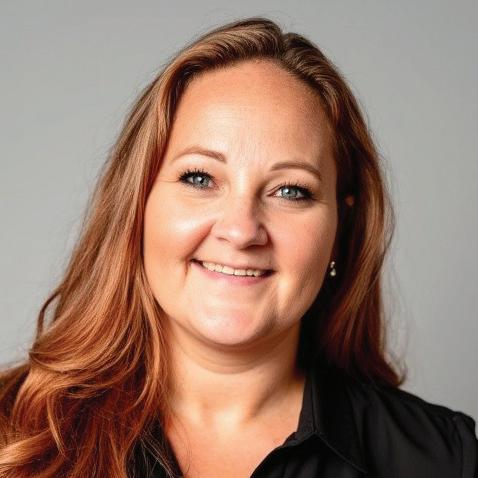
Sponsored by

earlier, or pursue new roles that prioritize work-life balance or purpose.
Forward-thinking plan design can reflect these emerging realities, accommodating different work arrangements and phased retirement to better align with shifting employee needs.
The coming wave of intergenerational wealth transfer is about more than individual financial milestones. It is a structural shift that will redefine financial wellness, workforce engagement, and the role of workplace programs in supporting employees across their financial lives.
“We are seeing wealth arrive earlier and in different ways, and that has profound implications for how people plan, save, and even approach their work”
Tawnya Duxbury, Canada Life
and advisors may want to consider broadening the savings conversation to include products that offer varying tax treatments, such as non-registered accounts, tax-free savings accounts (TFSAs), and registered education savings plans (RESPs).
“Gen X and millennials increasingly expect personalized workplace savings plans that align with their life stages, like RESPs while raising children. With the added complexity of intergenerational wealth transfers and contribution limit considerations, offering additional options like TFSAs or non-registered accounts allows members to maximize their benefits,” says Duxbury.
This moment also calls for rethinking employee engagement strategies and plan design. A sudden change in financial position can shift how employees view work itself – prompting some to reduce hours, retire
Duxbury says, “Inheritance is a workplace issue, and plan sponsors have an important role to play. By designing flexible programs, offering targeted resources, and communicating proactively, they can help employees steer through this transition and strengthen their value as employers in the process.”
The largest wealth transfer in Canadian history has already begun, and the workplaces that prepare for it now will be the ones best positioned to support their people as their financial realities shift.
1“Canadians are turning to family – and credit – to stay afloat,” MoneySense, July 18, 2025, www.moneysense.ca/news/ canadians-turning-to-family-and-credit-to-stay-afloat/. 2https://www.thestar.com/business/help-with-down-payment-nowessential-for-many-homebuyers-survey/article_a7af432d-6e0c-5224b695-fdbc63cc8476.html
3https://www12.statcan.gc.ca/census-recensement/2021/as-sa/98200-x/2021004/98-200-x2021004-eng.cfm
Mercer’s Alex Boucher on how Canadian employers can lead in mental health and psychological safety
in most Canadian provinces highlight the urgent need for all organizations to prioritize psychological safety and mental health. These laws are a call to action for HR leaders to turn compliance into a strategic advantage by fostering workplaces where every employee feels safe, valued, and supported. Quebec has also added compliance and governance steps that require action.
In March 2021, Quebec introduced Law 27, An Act to Modernize the Occupational Health and Safety System. This legislation came into force on October 6, 2025. Law 27 establishes new obligations for businesses, such as the requirement to include psychosocial risks in their occupational health and safety prevention plans. While Quebec’s laws are among the most comprehensive, other provinces are also strengthening their frameworks. Across Canada, Occupation Health and Safety Acts now almost universally include requirements to recognize and address mental health and psychological safety risks.
Mercer Marsh Benefits’ recent research shows that 51 percent of employees feel stressed in everyday life and 47 percent feel stressed at work most days, with over a third stressed in both cases. These stressors are costly – mental health issues account for 30 percent of all short-term disability claims and up to 50 percent of long-term disability claims and are associated with increased

The laws in Quebec and across Canada set the foundation – your role is to embed these principles into everyday practices that promote respect, inclusion, and support
absenteeism and turnover. Yet organizations that prioritize mental health see a 15 percentage point increase in employees reporting that they thrive in their roles.
This is a pivotal moment to act. Addressing psychosocial risks and fostering a culture of trust and openness can significantly improve employee well-being and organizational performance.
As HR leaders you are uniquely positioned to lead this change. The laws in Quebec and across Canada set the foundation –
your role is to embed these principles into everyday practices that promote respect, inclusion, and support.
Key actions include:
• understanding the psychological risk profile of your workforce and workplace
• addressing the most critical risks with specific actions
• designing work that supports physical and psychological well-being; for example, by reviewing workloads and social dynamics
• building awareness through targeted campaigns and manager training
• providing accessible, inclusive mental health benefits – such as counselling, digital tools, and preventive programs
The time to act is now. Workplace safety has evolved. Have organizational policies kept up? Mercer’s Global Talent Trends report indicates that only 35 percent of employees strongly agree that they can voice their opinions freely without fear of repercussions, and only 42 percent strongly agree that they feel psychologically safe at work. Those who do feel safe are 5.5 times more satisfied, with no plans to leave, and 2.1 times more likely to recommend their employer to a friend. Beyond the legal obligation, safety is good for business: 70 percent of executives say that investing in psychological safety and workforce security will deliver a measurable return.
Take these steps today:
1. Understand and assess the psychological risk profile of your organization.
2. Prioritize the risks and take action to reduce them.
3. Launch broad mental health awareness campaigns, and equip leaders to have empathetic conversations.
4. Proactively assess and redesign roles and workloads to reduce psychosocial risks.
5. Expand and actively promote mental health benefits, including onsite or virtual counselling options.
Your leadership can make a difference
Creating a psychologically safe workplace isn’t just about compliance – it’s about building a resilient, engaged workforce that drives your organization’s future. Your workplace practices and culture can help or harm; knowing where to start is key.
The future of work depends on your action today. Invest in your people’s mental health. Foster a culture of trust and respect, and lead Canada’s workplaces toward a healthier, safer, more inclusive future. Because when you prioritize psychological safety, everyone benefits – your people, your organization, and your community.
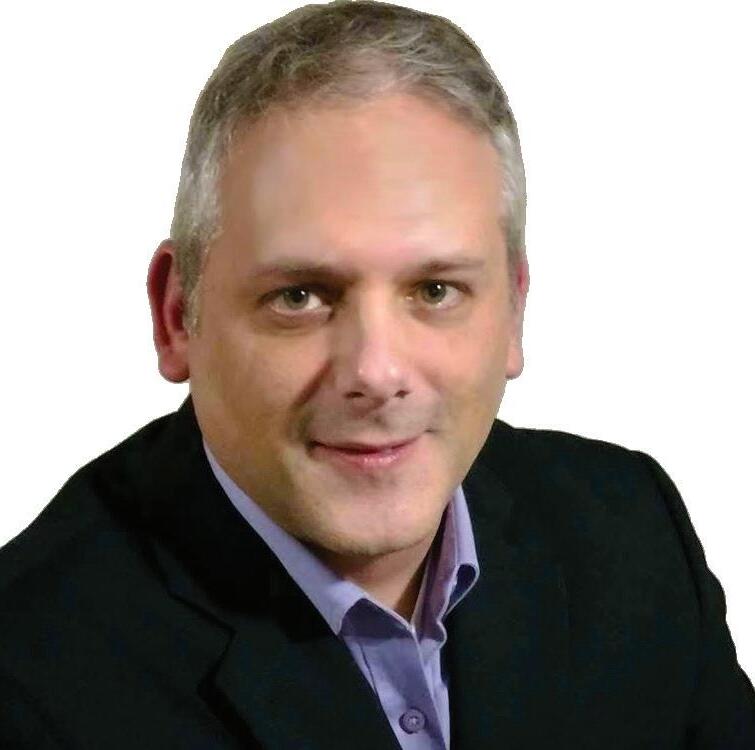

AS INSTITUTIONAL investors look beyond developed markets amid a global trade war, emerging economies continue to offer both opportunity and uncertainty. But for veteran investors, thinking of emerging markets as a single, cohesive asset class is a mistake that can cloud the view of what’s really going on beneath the surface.
“At its core, ‘emerging markets’ is a benchmark construct assembled by Index providers, not a homogenous market,” says Mathieu Bortot, portfolio manager at Fiera Capital, who emphasized the diversity and disparity within the EM universe. “The way that we argue EMs should be looked at is as an opportunity set rather than just one asset class,” he says.
Stephen Dover, chief market strategist and head of the Franklin Templeton Institute, agrees.
“Emerging markets are still very fractured,” says Dover, pointing to the geopolitical fault lines between China and the West, but also to the uneven evolution of EM benchmarks.
“The benchmarks have changed tremendously over the last 20 years, from commodities and export-driven to much more technology and value-added,” he adds.
That shift has made some countries particularly interesting to investors. South Korea, for example, came up repeatedly as a standout among the larger
EMs. Bortot underscores that Fiera’s emerging markets strategy is built around identifying country-level catalysts. For the past 18 months, Korea has been their largest overweight position.
“What differentiates us from most of the other EM funds,” Bortot says, “is that whenever we look at countries, we look at what is the predominant driving theme ... and then see anything tangential to that.”
In Korea’s case, the catalyst was a top-down political push to reform longstanding corporate governance issues. Historically, Korean equities have traded at a
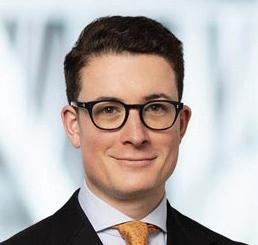
That changed, he says, when the government initiated structural reforms aimed at improving transparency, boosting shareholder value, and encouraging capital returns. The firm saw the shift gaining momentum at both the political and corporate levels. “We saw some big commitment to that and a big systemic shift in the whole market,” adds Bortot.
These types of inflection points are central to Fiera’s investment process. “You always want to look for pivotal changes, may they be at a government level or even at a stock level,” he says, adding that once
“EMs should be looked at as an opportunity set rather than just one asset class”
Mathieu Bortot, Fiera Capital
discount due to the dominance of chaebols − family-owned conglomerates that prioritized control and capital retention over shareholder returns.
“A portion of the companies wanted to keep the wealth within the family ,” Bortot explained, noting that meant minority investors were left without fairer dividends, buybacks, or governance protections.
those changes become tangible, advisors drill down to identify the companies best positioned to benefit from the new environment.
Bortot sees two standout investment stories in emerging markets right now − one among the major players and one from the smaller end of the spectrum. In the large-cap space, Korea is his top pick.
“Korea has been by far the most exciting opportunity,” Bortot says, crediting the government’s “value-up” reform program for triggering a market-wide re-rating. The reform was driven by demographic pressure: an aging population with insufficient pension coverage.
To address this, authorities pushed conglomerates to dismantle inefficient ownership structures, eliminate treasury shares, and return more capital to shareholders through buybacks and dividends.
“These changes happened across all sectors,” he says, citing early progress in the banks and later gains in semiconductors. Korea’s strategic role in supplying US energy grid technology has also elevated its relevance.
“Korean manufacturers are among the most important and fastest-growing suppliers to the US grid, particularly in large power transformers, which has given them a very good performance this year in emerging markets,” says Bortot.
Dover also singles out Korea as a standout, supported not just by a stable alliance with the
Source: Fiera Capital
US but also by its global leadership in semiconductors, shipbuilding, EV batteries, and even cultural exports like K-pop and Korean beauty products. And despite its performance, he says, “It’s still relatively inexpensive.”
But one of the most notable shifts, for Dover, is the rise of the Middle East within EM benchmarks. As he points out, “It’s now eight percent of the benchmark, up from two percent just a few years ago.”
Once absent from EM indices entirely, Middle Eastern markets are gaining weight quickly, due to both growth and increased index inclusion. He credits these changes to sweeping structural reforms, economic liberalization, and a deliberate shift toward development priorities over geopolitics.
“Those countries kind of want to get on with it,” he says, pointing to heavy investments in data centers, renewable energy, tourism, and education. “Their desire to get on with living a life is driving them to try to be less geopolitical and more just focused on economic growth.”
Dover also highlights Mexico, which stands to benefit from shifting trade patterns and supply chain regionalization, as well as Indonesia and Brazil.
Indonesia, he says, is riding a wave of electrification demand, especially for batteries, whereas Brazil, despite political volatility, is managing cyclical reforms well and continues to benefit from its commodity base.
He acknowledges that EMs have underperformed over the past decade, largely due to weaker earnings growth compared to developed markets. But with valuations low and the Canadian dollar weakening, he believes that dynamic is about to shift.
“Emerging markets earnings don’t have to change that much because they’re relatively less expensive,” he says. “If you have the tailwind of a falling dollar, I think emerging markets can continue to outperform developed markets.”
Among smaller emerging markets, Greece stands out for Bortot as an unexpected success. After years as Europe’s financial outlier, Greece implemented a major banking sector overhaul beginning in 2021. Aided by the European recovery fund − equal to ~20 percent of GDP − the country recapitalized its banks, cleared out non-performing loans, removed state ownership in the majority of these, and reintroduced dividends.
“Today, they are amongst the most profitable banks in the Eurozone, still trading a decent valuation,” Bortot says. That recovery has made Greece one of the best-performing markets this year, offering genuine domestic growth potential compared to the internationally exposed listings elsewhere in Europe.
“If you’re looking for a strong domestic growth and fundamentally driven market, Greece has really stood out,” he says.
Source:IMF,WorldEconomicOutlook,October2025

“If you have the tailwind of a falling dollar, I think emerging markets can continue to outperform developed markets”
Stephen Dover, Franklin Templeton Institute
According to Bortot, China and India have faced notable capital outflows this year, largely due to valuation pressures and investor uncertainty. In India’s case, Bortot points to a “perfect storm” of negative factors, including elevated valuations reaching levels comparable to the S&P 500, a shift in government dynamics, broad earnings downgrades, currency depreciation, and central bank missteps.
For Dover, India remains a long-term conviction call, as he has been extremely
positive on the country for 25 years, describing it as a “leapfrog story.” He points to its transition from a cash economy to one that embraces digital payments, ongoing tax reforms, and increasing economic formalization. While growth has recently slowed, he sees the current period as a potential entry point.
As for China, Bortot highlights a shift in investor attention, which has exacerbated the capital flight. However, he
believes sentiment could reverse if earnings momentum picks up.
Additionally, Bortot notes that investor skepticism remains high due to lingering concerns over regulatory intervention.
“[Investors] understand the discount that the equity market in China is trading at, but they also fear that 2022 would come back,” he says, referencing the policy crackdowns that wiped out significant shareholder value. Regulatory risk continues to be a major deterrent despite deeply discounted valuations.
Still, he sees early signs of change.
“The government [is] trying to instate a lot more corporate governance rules [and] be a bit more market friendly,” Bortot notes.
Initiatives like the opening of southbound trading, which allows mainland Chinese investors to access Hong Konglisted stocks, have started to narrow the valuation gap between the two markets − a sign, he says, of “some sort of a market normalization.” Still, Bortot adds, “There is a lot more confidence to induce into the markets before we see big flows go back.”
Dover ultimately sees multiple tailwinds supporting the EM investment case: stronger relative growth rates, lower valuations compared to developed markets, and structural shifts like the diversification of global supply chains.
Additionally, the “China plus one” strategy − where manufacturers seek to reduce dependency on China − is benefitting markets like Vietnam, India, and Mexico. Despite this evolution, Dover stresses that EMs remain fragmented, and geopolitical tensions − particularly US−China competition − are having uneven effects.
“That’s probably harmful to the emerging markets tied to China, but it might be helpful for the emerging markets not so much tied to China,” he says.

Contact: Janick Boudreau, CFA
Executive Vice-President, Business Development & Client Partnerships
Address: 800 René-Lévesque Blvd. W., Ste. 2800, Montréal, QC, H3B 1X9
Phone: 514-908-1989
Fax: 514-287-7200
Email: j.boudreau@addendacapital.com
Website: addendacapital.com
Total Canadian clients: 215
Clients with EAFE & EM portfolios: 24
Separately managed AUM for Canadian clients (CDN $M): EAFE $367.3
Pooled AUM for Canadian clients (CDN $M): US $301.5; EAFE $234.1
Total EAFE & EM pension AUM for Canadian clients (CDN $M): $6
Total Canadian pension AUM for Canadian clients (CDN $M): $6,609
Total firm pension AUM (CDN $M): $6,609
Management style: Active; market capitalization: large; growth
Currency management: No
Portfolios managed: Internally
Managing EAFE & EM since: May 1, 2012
Ownership structure: Third party, 100%; Co-operators Financial Services Limited, 95%; Addenda Capital employees, 5%
Portfolio managers: 27
Research analysts: 33 Performance standards: GIPS
Locations: Montréal, Toronto, Guelph, Regina Minimum investment (CDN $M): Pooled, $5; separate, $10

Contact: Tanya Bishop
Senior Director
Address: 2000 McGill College Ave., Montreal, QC, H3A 3H3
Phone: 647-201-4225
Email: tanya.bishop@amundi.com
Website: amundi.ca/professional
Total Canadian clients: 43
Clients with EAFE & EM portfolios: 7
Separately managed AUM for Canadian clients (CDN $M): Single country $25; emerging markets
$67
Pooled AUM for Canadian clients (CDN $M): Emerging markets $299
Total EAFE & EM pension AUM for Canadian clients (CDN $M): $345
Total Canadian pension AUM for Canadian clients (CDN $M): $8,904
Total firm pension AUM (CDN $M): $8,904
Management style: Active; market capitalization: large; style: value
Currency management: Yes
Portfolios managed: Internally
Ownership structure: Principals, 70%; publicly held, 29%; third party, 1%
Portfolio managers: 50+ on EM
Research analysts: 20 on EM
Performance standards: Other
Locations: Paris, London, Milan, Dublin
Minimum investment (CDN $M): Pooled, $5; separate, $20

BEUTEL, GOODMAN & COMPANY LTD.
Contact: Kimberley Woolverton
Managing Director, Head of Institutional
Address: 2000-20 Eglinton Avenue W., Toronto, ON, M4R 1K8
Phone: 416-545-5367 ext. 367
Fax: 416-485-8516
Email: kwoolverton@beutelgoodman.com
Website: beutelgoodman.com
Total Canadian clients: 103
Clients with EAFE & EM portfolios: 3
Separately managed AUM for Canadian clients (CDN $M): US $3,954; EAFE $548; single country $11,791
Pooled AUM for Canadian clients (CDN $M): US $3,319; EAFE $648; single country $8,876
Total EAFE & EM pension AUM for Canadian clients (CDN $M): $565
Total Canadian pension AUM for Canadian clients (CDN $M): $22,473
Total firm pension AUM (CDN $M): $22,836
Management style: Active; market capitalization: large; style: value
Currency management: No
Portfolios managed: Internally Managing EAFE & EM since: January 1, 2001
Ownership structure: Principals, 51%; third party, 49%
Portfolio managers: 2
Research analysts: 7
Performance standards: GIPS
Location: Toronto, ON
Minimum investment (CDN $M): Pooled, $0.5; separate, $25

BURGUNDY ASSET MANAGEMENT LTD.
Contact: Mike Sandrasagra
Vice President, Global Head of Consultant Relations
Address: 181 Bay St., Ste. 4510, Toronto, ON, M5J 2T3
Phone: 416-869-3222
Fax: 416-869-1700
Email: msandrasagra@burgundyasset.com
Website: burgundyasset.com
Total Canadian clients: 4,271
Clients with EAFE & EM portfolios: 84
Separately managed AUM for Canadian clients (CDN $M): US $2,597; EAFE $13; single country $584; emerging markets $25
Pooled AUM for Canadian clients (CDN $M): US $5,175; EAFE $775; single country $2,775; emerging markets $482
Total EAFE & EM pension AUM for Canadian clients (CDN $M): $545
Total Canadian pension AUM for Canadian clients (CDN $M): $4,323
Total firm pension AUM (CDN $M): $5,290
Management style: Active; style: value; we emphasize a quality-value investment style. We offer distinct strategies that focus on different market capitalization ranges
Currency management: No
Portfolios managed: Internally
Managing EAFE & EM since: EAFE – November 2004, emerging markets – May 2010
Ownership structure: Principals, 100%
Portfolio managers: 14
Research analysts: 16
Performance standards: GIPS
Locations: Toronto, ON (HQ), Montreal, QC, Vancouver, BC
Minimum investment (CDN $M): Pooled, $5; separate, $10
Note: On June 19, 2025, Burgundy announced it will formally join BMO Financial Group (BMO). Burgundy will operate as an independent line of business within BMO, maintaining the investment philosophy, people, and principles that have defined the firm’s approach since its
inception. The transaction is expected to close in November 2025.
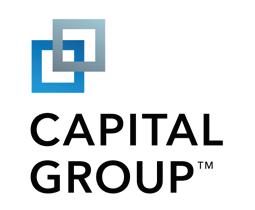
CAPITAL GROUP CANADA
Contact: Mike Tuira
Vice-President, Institutional
Address: Brookfield Place, 181 Bay St., Ste. 3100, Toronto, ON, M5J 2T3
Phone: 647-553-1054
Fax: 213-486-9223
Email: Mike.Tuira@capgroup.com
Website: capitalgroup.com/ca
Management style: Active; style: core; all capitalization ranges (small, mid, large)
Currency management: Yes
Portfolios managed: Internally
Managing EAFE & EM since: 1978
Ownership structure: Principals, 100%
Portfolio managers: 126
Research analysts: 228
Performance standards: GIPS
Locations: London, Geneva, Los Angeles, San Francisco, Toronto, New York, Washington, DC, Tokyo, Hong Kong, Singapore, Mumbai, plus service offices in multiple cities
Minimum investment (CDN $M): Pooled, $15; separate, TBD
(CDN $M): $1,220
Total Canadian pension AUM for Canadian clients (CDN $M): $26,905
Total firm pension AUM (CDN $M): $32,517
Management style: Active; market capitalization: large; style: growth; management style is active and passive
Currency management: Yes
Portfolios managed: Internally
Managing EAFE & EM since: 1992
Ownership structure: Publicly held, 100%
Portfolio managers: 21
Research analysts: 35
Performance standards: AIMR
Locations: Toronto, Montreal
Minimum investment (CDN $M): Pooled, $10; separate, $25

Contact: Jean-Philippe Lemay
Managing Director, Head of Institutional Sales, Global
Address: 1800 McGill College Ave., Ste. 1300, Montreal, QC, H3A 3J6
Phone: 514-287-0110
Fax: 514-287-9176
Email: JPLemay@cclgroup.com
Website: cclinvest.com
Total Canadian clients: 192
Clients with EAFE & EM portfolios: 28
Pooled AUM for Canadian clients (CDN $M): EAFE $280.88; emerging markets $1,497.47
Total EAFE & EM pension AUM for Canadian clients (CDN $M): $1,175.59
Connecticut (US); London (UK); Gurugram (India) Minimum investment (CDN $M): Pooled, $10; separate, $300

Contact: Natalie Bisaillon
Managing Director and Chief of Institutional Client
Relations
Address: 1, Complexe Desjardins, 20th Fl., South Tower, Montreal, QC, H5B 1B2
Phone: 514-214-5742
Fax: 514-281-7253
Email: Natalie.Bisaillon@desjardins.com
Website: dgam.ca
Total Canadian clients: 39
Clients with EAFE & EM portfolios: 6
Separately managed AUM for Canadian clients (CDN $M): EAFE $316
Pooled AUM for Canadian clients (CDN $M):
Emerging markets $313
Total Canadian pension AUM for Canadian clients (CDN $M): $12,556
Total firm pension AUM (CDN $M): $12,556
Management style: Active; market capitalization: large; style: core
Currency management: Yes
Portfolios managed: Internally
Managing EAFE & EM since: 1991
Ownership structure: Third party, 100%
Portfolio managers: 6
Research analysts: 2
Performance standards: AIMR
Locations: Montréal, Lévis, Toronto
Minimum investment (CDN $M): Pooled, $5; separate, $50
CIBC ASSET MANAGEMENT
Contact: Carlo DiLalla
Managing Director & Head, Institutional Asset Management
Address: 161 Bay St, Ste. 2230, Toronto, ON, M5J 2S1
Phone: 416-980-2768
Email: carlo.dilalla@cibc.com
Website: cibcam-institutional.com
Total Canadian clients: 126
Clients with EAFE & EM portfolios: 46
Separately managed AUM for Canadian clients (CDN $M): US $1,022.03; EAFE $631.72; single country $33957.02
Pooled AUM for Canadian clients (CDN $M): US $322.95; EAFE $609.79; single country $123.74
Total EAFE & EM pension AUM for Canadian clients
Total Canadian pension AUM for Canadian clients (CDN $M): $31,828.61
Total firm pension AUM (CDN $M): $39,976.33
Management style: Active; market capitalization: large; style: core; market cap includes all cap and small cap
Currency management: Yes
Portfolios managed: Internally
Managing EAFE & EM since: 2013
Ownership structure: Principals, 71%; third party, 29% (Connor, Clark & Lunn Financial Group Ltd.)
Portfolio managers: 11
Research analysts: 44
Performance standards: Other
Locations: Investment professionals: Vancouver; administration/sales: Toronto, Montreal;

Contact: Sarah Aves
Head of Institutional Clients, Canada
Address: 1981 McGill College Ave., Ste. 1500, Montreal, QC, H3A 0H5
Phone: 416-475-8566
Fax: 416-866-2390
Email: saves@fieracapital.com
Website: fieracapital.com
Total Canadian clients: 3,501
Clients with EAFE & EM portfolios: 562
Separately managed AUM for Canadian clients (CDN $M): US $1,565
Pooled AUM for Canadian clients (CDN $M): US $4,240; EAFE $335; emerging markets $97
Total EAFE & EM pension AUM for Canadian clients (CDN $M): $99
Total Canadian pension AUM for Canadian clients (CDN $M): $32,086
Total firm pension AUM (CDN $M): $37,255
Management style: Active; market capitalization: large; style: growth; Fiera Capital offers a broad spectrum of investment strategies across asset classes, styles, and capitalization ranges. GARP: growth at reasonable price
Currency management: Yes
Portfolios managed: Internally Managing EAFE & EM since: 2010
Ownership structure: Principals, 20%; publicly held, 80%
Portfolio managers: 41
Research analysts: 49
Performance standards: AIMR, GITS
Locations: Montreal, Toronto, Calgary, New York, Boston, Dayton, London, Frankfurt, Isle of Man, Zurich, The Hague, Hong Kong, Singapore, Abu Dhabi
Minimum investment (CDN $M): Pooled, $5; separate, $20

Contact: Dennis Tew
Head of Sales, Canada
Address: 200 King St. W, Ste. 1400, Toronto, ON, M5H 3T4
Phone: 416-957-6023
Email: dennis.tew@franklintempleton.ca
Website: franklintempleton.ca
Total Canadian clients: 110
Clients with EAFE & EM portfolios: 20
Separately managed AUM for Canadian clients (CDN $M): US $861; EAFE $58; single country $351; emerging markets $158
Pooled AUM for Canadian clients (CDN $M): US $23; EAFE $69; single country $783; emerging markets $896
Total EAFE & EM pension AUM for Canadian clients (CDN $M): $1,181
Total Canadian pension AUM for Canadian clients (CDN $M): $14,354
Benefits and Pensions
Total firm pension AUM (CDN $M): $14,354
Management style: Active; market cap: small, mid, large; style: value, growth, core Currency management: Yes
Portfolios managed: Internally Managing EAFE & EM since: EAFE – 1954, emerging markets – 1987
Ownership structure: Principals, 36%; publicly held, 64%
Portfolio managers: 170
Research analysts: 177
Performance standards: GIPS
Locations: Toronto, Nassau, Fort Lauderdale, Edinburgh, Singapore, Melbourne, Hong Kong, Shanghai, Rio De Janeiro, Buenos Aires, Warsaw, Istanbul, Moscow, Dubai, Mumbai, Vienna, Bucharest, Johannesburg, Ho Chi Minh City, Kuala Lumpur, Seoul, Bangkok
Minimum investment (CDN $M): Pooled, $1; separate, $20

GLOBAL ALPHA CAPITAL MANAGEMENT
Contact: Jean-Philippe Lemay
Managing Director, Head of Institutional Sales, Global Address: 1800 McGill College Ave., Ste. 1300, Montreal, QC, H3A 3J6
Phone: 514-287-0110
Fax: 514-287-9176
Email: JPLemay@cclgroup.com
Website: globalalphacapital.com
Total Canadian clients: 57
Clients with EAFE & EM portfolios: 16
Separately managed AUM for Canadian clients (CDN $M): EAFE $1,002.10
Pooled AUM for Canadian clients (CDN $M): EAFE
$256.10; emerging markets $15.52
Total EAFE & EM pension AUM for Canadian clients (CDN $M): $993.97
Total Canadian pension AUM for Canadian clients (CDN $M): $2,409.01
Total firm pension AUM (CDN $M): $5,579.02
Management style: Active; market capitalization: small; style: core
Currency management: No
Portfolios managed: Internally Managing EAFE & EM since: EAFE – 2009, emerging markets – 2021
Ownership structure: Principals, 51%; third party, 49% (Connor, Clark & Lunn Financial Group Ltd.)
Portfolio managers: 7 Research analysts: 5
Performance standards: Other
Locations: Investment professionals: Montreal, Vancouver; administration/sales: Toronto; Connecticut (US); London (UK); Gurugram (India) Minimum investment (CDN $M): Pooled, $1; separate, $20

GUARDIAN CAPITAL LP
Contact: Robin Lacey
Head of Institutional Asset Management
Address: 199 Bay St., Ste. 2700, Toronto, ON, M5L 1E8
Phone: 416-947-4082
Email: rlacey@guardiancapital.com
Website: guardiancapital.com
Total Canadian clients: 85
Clients with EAFE & EM portfolios: 6
Separately managed AUM for Canadian clients (CDN $M): US $31.76; EAFE $12.24; single country $8,577.37; emerging markets $0
Pooled AUM for Canadian clients (CDN $M): US $278.76; EAFE $137.04; single country $2,759.14; emerging markets $19.28
Total EAFE & EM pension AUM for Canadian clients (CDN $M): $0.14
Total Canadian pension AUM for Canadian clients (CDN $M): $2,233.99
Total firm pension AUM (CDN $M): $2,562.94
Management style: Active; market cap: mid to large cap; style: growth & core Currency management: Yes
Portfolios managed: Internally Managing EAFE & EM since: 2004
Ownership structure: Third party, 100%
Portfolio managers: 81
Research analysts: 36
Performance standards: AIMR
Locations: Toronto, Montreal, Calgary, London (UK), Salt Lake City (USA), Richmond (USA), Charlotte (USA)
Minimum investment (CDN $M): Pooled, $1; separate, varies by mandate

JARISLOWSKY FRASER
Contact: Dexton Blackstock, CFA Head of Institutional Business Development | Central & Western Canada
Address: 40 Temperance St., Ste. 1800, Toronto, ON, M5H 0B4
Phone: 416-363-7417
Fax: 416-363-8079
Email: dexton.blackstock@jflglobal.com
Website: jflglobal.com
Management style: Active; market capitalization: large; quality GARP
Currency management: No
Portfolios managed: Internally
Managing EAFE & EM since: +25 years
Ownership structure: Third party, The Bank of Nova Scotia
Portfolio managers: 2
Research analysts: 11
Performance standards: GITS
Locations: Montreal, Toronto, Calgary, Vancouver Minimum investment (CDN $M): Pooled, $1; separate, $25

Contact: Gary Wong
Principal, Portfolio Manager – Institutional Clients
Address: 400 Burrard St, Ste. 1500, Vancouver, BC, V6C 3A6
Phone: 604-683-3391
Fax: 604-683-0323
Email: GaryW@leithwheeler.com
Website: leithwheeler.com
Total Canadian clients: 240
Clients with EAFE & EM portfolios: 137 Separately managed AUM for Canadian clients (CDN $M): US $243
Pooled AUM for Canadian clients (CDN $M): US $1,330; EAFE $1,141; emerging markets $221
Total EAFE & EM pension AUM for Canadian clients (CDN $M): $789
Total Canadian pension AUM for Canadian clients (CDN $M): $12,953
Total firm pension AUM (CDN $M): $12,953
Management style: Active; style: value; all-cap market capitalization style
Currency management: No
Portfolios managed: Externally, Barrow Hanley
Global Investors
Managing EAFE & EM since: 1995
Ownership structure: Principals, 100%
Portfolio managers: 24
Research analysts: 20
Performance standards: Other
Locations: Vancouver, Calgary, Toronto, Montreal Minimum investment (CDN $M): Pooled, $3; Separate, $10
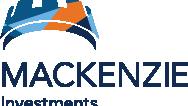
Contact: Greg Hourigan
Vice President, Head of Canadian Institutional Address: 180 Queen St. W., Toronto, ON, M5V 3L7
Phone: 437-677-0797
Fax: 1-866-766-6623
Email: Greg.Hourigan@mackenzieinvestments.com
Website: mackenzieinvestments.com
Total Canadian clients: 3
Clients with EAFE & EM portfolios: 2
Separately managed AUM for Canadian clients
(CDN $M): US $316; single country $66; emerging markets $1,412
Pooled AUM for Canadian clients (CDN $M): EAFE
$0; emerging markets $2003
Total EAFE & EM pension AUM for Canadian clients (CDN $M): $473
Total firm pension AUM (CDN $M): $4,580
Management style: Active; the Mackenzie Global Quantitative Equity Team manages several emerging market strategies that range in small, all, and large market cap. The team manages two international EAFE strategies that range in small and large market cap
Currency management: No
Portfolios managed: Internally
Managing EAFE & EM since: Emerging markets –2018, international – 2019
Ownership structure: Third party, 100%
Portfolio managers: 4
Research analysts: 4 analysts and 2 directors supporting research analytics
Performance standards: Other, GIPS
Locations: Toronto, Winnipeg, Montreal, Boston, Dublin, Hong Kong, Beijing
Minimum investment (CDN $M): Pooled, $5; separate, $25

Contact: Neeraj Jain
Institutional Portfolio Manager
Address: 79 Wellington St. W., TD South Tower, Ste. 3410, Box 276, Toronto, ON, M5K 1J5
Phone: 416-865-3929
Fax: 403-262-4099
Email: njain@mawer.com
Website: mawer.com
Total Canadian clients: 255
Clients with EAFE & EM portfolios: 234
Separately managed AUM for Canadian clients (CDN $M): US $4,946.3; EAFE $21,726.0; single country $3,740.7; emerging markets $1.5
Pooled AUM for Canadian clients (CDN $M): US $1,403.4; EAFE $15,768.4; single country $4,489.7; emerging markets $152.1
Total EAFE & EM pension AUM for Canadian clients (CDN $M): $12,175.8
Total Canadian pension AUM for Canadian clients (CDN $M): $17,256.2
Total firm pension AUM (CDN $M): $21,068.0
Management style: Active; style: core; market cap: all cap
Currency management: No
Portfolios managed: Internally
Managing EAFE & EM since: 38 years
Ownership structure: Principals, 100%
Portfolio managers: 19
Research analysts: 18
Performance standards: Other
Locations: Calgary, Toronto, Singapore
Minimum investment (CDN $M): Pooled, $10; separate, $50

NS PARTNERS LTD.
Contact: Jean-Philippe Lemay
Managing Director, Head of Institutional Sales, Global
Address: 1800 McGill College Ave., Ste. 1300, Montreal, QC, H3A 3J6
Phone: 514-287-0110
Fax: 514-287-9176
Email: JPLemay@cclgroup.com
Website: ns-partners.co.uk
Total Canadian clients: 16
Clients with EAFE & EM portfolios: 14
Separately managed AUM for Canadian clients (CDN $M): US $101.21
Pooled AUM for Canadian clients (CDN $M): US $2,555.69; EAFE $1,035.19; emerging markets $618.03
Total EAFE & EM pension AUM for Canadian clients (CDN $M): $105.86
Total Canadian pension AUM for Canadian clients (CDN $M): $105.86
Total firm pension AUM (CDN $M): $192.90
Management style: Active; market capitalization: large; style: core; market capitalization is all cap. NS Partners’ manager style is a bias toward quality/growth
Currency management: No
Portfolios managed: Internally
Managing EAFE & EM since: EAFE – 1981,
emerging markets – 1996
Ownership structure: Principals, 50%; third party, 50% (Connor, Clark & Lunn Financial Group Ltd.)
Portfolio managers: 10
Research analysts: 1
Performance standards: Other
Locations: Investment professionals: London (UK); administration/sales: Toronto, Montreal, Vancouver; Connecticut (US); Gurugram (India) Minimum investment (CDN $M): Pooled, $1; separate, $25

Contact: Rocco Vessio
Director Business Development
Address: Toronto, Ontario, M5T 2W5
Phone: 647-823-4813
Fax: 647-823-4813
Email: rocco.vessio@setanta-asset.com
Website: setanta-asset.com
Total Canadian clients: 1,545
Clients with EAFE & EM portfolios: 432
Separately managed AUM for Canadian clients (CDN $M): EAFE $113
Pooled AUM for Canadian clients (CDN $M): EAFE $1,335
Total EAFE & EM pension AUM for Canadian clients (CDN $M): $16
Total Canadian pension AUM for Canadian clients (CDN $M): $652
Total firm pension AUM (CDN $M): $20,590 Management style: Active; style: value; all cap
Currency management: No
Portfolios managed: Internally
Managing EAFE & EM since: 23 years
Ownership structure: Principals, 100%
Portfolio managers: 14
Research analysts: 2
Performance standards: Other
Locations: Dublin, Toronto, Frankfurt
Minimum investment (CDN $M): Pooled, $50,000; separate, $50,000

T. ROWE PRICE
Contact: Lauren Bloom
Head of Canada Distribution
and Pensions
Address: 77 King St. W., TD North Tower, Ste. 4240, Toronto, ON, M5K 1G8
Phone: 647-355-6887
Email: lauren.bloom@troweprice.com
Website: troweprice.com/Canada
Total Canadian clients: 22
Clients with EAFE & EM portfolios: 1
Separately managed AUM for Canadian clients (CDN $M): US $10,519; emerging markets $51
Pooled AUM for Canadian clients (CDN $M): US $458; emerging markets $51
Total EAFE & EM pension AUM for Canadian clients (CDN $M): $51
Total Canadian pension AUM for Canadian clients (CDN $M): $3,450
Total firm pension AUM (CDN $M): $1,319,674
Management style: Active
Currency management: No
Portfolios managed: Internally
Managing EAFE & EM since: 1984
Ownership structure: Publicly held, 100%; Common stock owned outright by our associates and directors, combined with outstanding vested stock options and unvested restricted stock awards, total nearly 6% of the firm’s outstanding shares and outstanding vested stock options at December 31, 2024
Portfolio managers: 147 (66 equity, 52 fixed income, and 29 multi-asset)
Research analysts: 258
Performance standards: GIPS
Locations: Baltimore (US), London, Hong Kong, Owings Mills (US), Singapore, Tokyo, San Francisco (US), Colorado Springs (US), Copenhagen, Amsterdam, Stockholm, Sydney, Luxembourg, Toronto, Zurich, Dubai, Milan, Melbourne, Frankfurt, Madrid, New York (US), Philadelphia (US), Shanghai, Washington DC (US)
Minimum investment: Pooled, $5,000,000; separate, $60,000,000
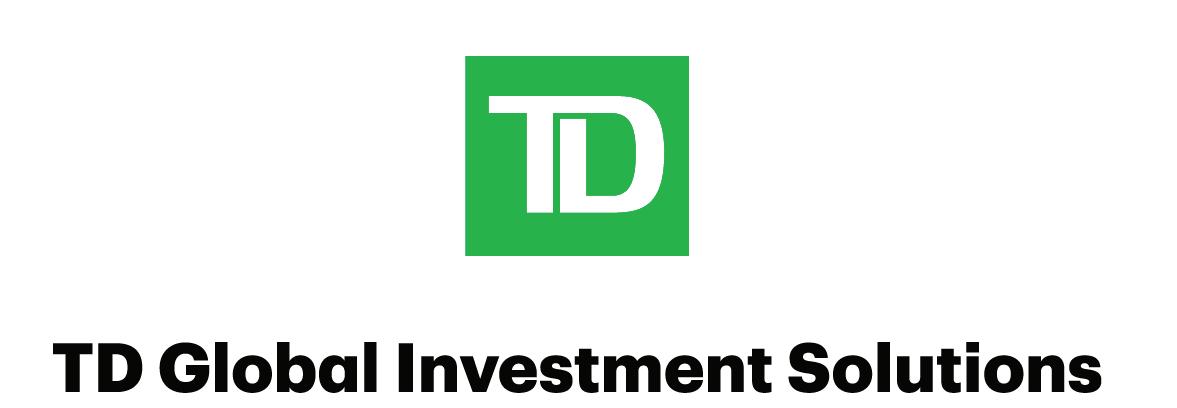
TD GLOBAL INVESTMENT SOLUTIONS
Contact: Mark Cestnik
Managing Director
Address: 161 Bay St., 34th Fl., Toronto, ON, M5J 2T2
Phone: 416-274-1742
Email: mark.cestnik@tdam.com
Website: tdgis.com
Total Canadian clients: 523
Clients with EAFE & emerging markets portfolios: 64 Separately managed AUM for Canadian clients (CDN $M): US $761.7
Pooled AUM for Canadian clients (CDN $M): US
$9,467.2; EAFE $2,475
Total EAFE & EM pension AUM for Canadian clients (CDN $M): $2,475
Total Canadian pension AUM for Canadian clients (CDN $M): $156,114
Total firm pension AUM (CDN $M): $158,467
Management style: Active; market capitalization: large; style: core; management style: active and passive
Currency management: No
Portfolios managed: Internally
Managing EAFE & EM since: 1992
Ownership structure: TD Global Investment
Solutions represents TD Asset Management Inc. (TDAM) and Epoch Investment Partners, Inc. (TD Epoch). TDAM and TD Epoch are affiliates and wholly owned subsidiaries of the TorontoDominion Bank
Portfolio managers: 71
Research analysts: 204
Performance standards: Other
Locations: Toronto, Montreal, Regina, Winnipeg Minimum investment (CDN $M): Pooled, $17; separate, $200

VAN BERKOM GLOBAL ASSET MANAGEMENT
Contact: Andy Kong
Head of Global Business Development
Address: 600 Blvd. de Maisonneuve W., Montreal, QC, H3A 3J2
Phone: 514-991-5754
Fax: 514-985-2430
Email: akong@vanberkomglobal.com
Website: vanberkomglobal.com
Total Canadian clients: 22
Clients with EAFE & EM portfolios: 3
Separately managed AUM for Canadian clients (CDN $M): US $2,394
Pooled AUM for Canadian clients (CDN $M): EAFE $3.9
Total EAFE & EM pension AUM for Canadian clients (CDN $M): $4
Total Canadian pension AUM for Canadian clients (CDN $M): $2,519
Total firm pension AUM (CDN $M): $4,095
Management style: Active; market capitalization: small; style: core
Currency management: No
Portfolios managed: Internally
Managing EAFE & EM since: 3 years
Ownership structure: Principals, 100%
Portfolio managers: 5
Research analysts: 11
Location: Montreal
THE WORLD of ESG investing is at a crossroads. Once buzzwords, terms like “ESG” and “sustainable investing” are being questioned, if not discarded, among institutional investors in favour of sharper frameworks and more measurable outcomes.
According to industry leaders, that shift is as much about market maturity as it is about political and regulatory backlash.
“Before COVID, it was the intent,” says Laila Danechi, senior business development manager at Pictet Asset Management. “Now, the conversation has shifted. It’s no longer about the intent but about the ‘how’; how managers are imbedding those considerations into their investment process. And it’s the ‘how’ that is the tough nut to crack.”
Aaron White, executive director and head of sustainable investments at CIBC Asset Management, agrees, noting a clear decline in retail investor enthusiasm for sustainable investments compared to the surge seen between 2020 and 2022, attributing the slowdown to growing polarization around ESG-related topics.
He emphasizes, however, that institutional investors, including major pension plans and endowments, are staying the course and even doubling down.
“When you have a much longer investment time horizon, the reality of these risks and opportunities becomes more material,” he says, acknowledging these investors are increasingly aware that meeting long-term
objectives, such as net-zero targets, requires contributing to real-world decarbonization.
“You can’t have a net-zero portfolio without a net-zero world,” he adds.
For Monika Freyman, VP of sustainable investing at Addenda Capital, ESG has reached a pivotal point where clarity and consistency in terminology are crucial. While terms like ESG, responsible investing, and sustainable investing are often used interchangeably, she prefers “sustainable investing” because it’s broader
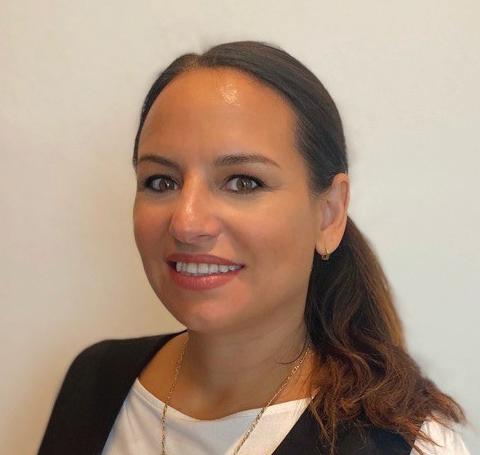
the term “ESG,” which he says has become politically charged, and is instead emphasizing the financial relevance of sustainability risks and opportunities. This shift reflects a broader effort by firms to better communicate the tangible value of their sustainability work, particularly in how it contributes to long-term financial performance.
“The industry has really been focused on articulating the value proposition and showcasing to investors and maybe even skeptics the type of work that our teams
“I don’t think ESG is done... Institutional investors are just taking a pause to reassess”
Laila Danechi, Pictet Asset Management
and more inclusive. Crucial are the core definitions agreed upon by the industry and laid out by the CFA Institute and UNPRI, she says.
ESG, she explains, refers specifically to environmental, social, and governance factors within investment decisions, while sustainable investing encompasses a whole process – including “being an active owner of your capital” through stewardship and engagement.
White notes that the investment industry has been deliberately distancing itself from
actually conduct and how they’re interconnected with long-term performance. That’s been critical in terms of us both justifying the importance of sustainability work but also navigating this new environment,” he explains.
Still, as Danechi is quick to emphasize, “I don’t think ESG is done... Institutional investors are just taking a pause to reassess.”
White acknowledges that political volatility – especially in the US – has created uncertainty around ESG, but he sees asset

managers responding by sharpening their focus rather than retreating. He emphasizes that firms are reinforcing the value of ESG integration by linking it directly to financial performance, adding that the emphasis now is on how research drives better decisions and outcomes.
Closer to home, Danechi points to unintended consequences from Canada’s Bill C-59, which aims to combat greenwashing but has prompted firms to remove ESG reports altogether from their websites. She believes the lack of consistent, comparable data is making managers pull back, not lean in.
While she doesn’t dispute the importance of oversight, she emphasizes the critical effect this bill has had.
“It came from a very good side,” she says, “but actually a lot of investors have scaled back ... because it’s very difficult to get the data and comparable data as well.”
White acknowledges that while Canada’s Bill C-59 and related CSA guidance have faced criticism for their lack of clarity –particularly around enforcement and scope – the underlying goal has had a beneficial impact on the industry.
Freyman suggests that Bill C-59 might have been more effective if it had followed the implementation of clear sustainability reporting standards. She argues that introducing the Canadian Sustainability Standards Board (CSSB) guidelines first would have given companies a consistent framework for disclosing climate and ESG-related information.
As a result, investors would have had a standardized framework for reporting material information, she says, adding this, in turn, would have limited the variability and subjectivity in disclosures – preventing the current confusion between “apples and
oranges” and reducing reliance on vague or overly polished marketing materials.
“After companies were used to doing good standardized disclosure, it would have been
a more natural maturity progression,” she says. “It would have been ideal to bring in the CSSB first.”
Yet, White acknowledges that the ambiguity has forced firms to be far more rigorous in backing up their claims and, as a result, “has been very positive for the industry.”
White outlines two key areas where institutional investors are ramping up efforts in response to climate risk. First, he says, there’s a growing emphasis on developing the internal tools, expertise, and frameworks necessary to assess and price climate-related risks across portfolios, noting that asset owners are also placing more scrutiny on how managers are building internal capacity and capabilities in climate science.
Second, he underscores continued momentum in allocating capital to
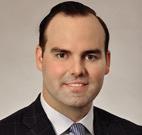
explains that investors aiming for net-zero targets are increasingly turning to private equity, credit, and debt because these asset classes offer a more direct path to real-world decarbonization.
“Private markets are primed to actually deliver on that additionality that will drive the transition forward,” he says. “Funds are offering very attractive investment optionality alongside the real-world outcomes.”
Danechi ultimately stresses that sustainable investing requires more than simply selecting the right strategy. It also demands a thorough evaluation of the asset management firm behind it. After all, “if they’re not aligned, there is a risk of a disconnect,” she notes.
In fact, she also believes that instead of the label “ESG,” it should be “GES,” as everything starts with the “G” for governance.
“When you have a much longer horizon, the reality of these risks and opportunities becomes more material”
Aaron White, CIBC Asset Management
climate-focused solutions, particularly within private markets, highlighting strong investor demand for infrastructure and decarbonization strategies. He also flags a rising interest in emerging markets, as well as strategy launches on managing risk in the global south, especially where climate transition intersects with development goals, pointing to opportunities like transitional infrastructure, supporting natural capital solutions, and scaling net-zero aligned industries.
He also observes that in private markets, where asset owners prioritize sustainability, capital is starting to shift accordingly. He
“Good governance is always key,” she says, underscoring how good governance underpins a company’s ability to manage risk, regardless of sector.
Looking ahead, Danechi believes the top ESG investment priorities right now are climate transition and biodiversity, but the ways investors approach these issues are evolving. She sees a growing split between two schools of thought in sustainable investing: One is focused on “positive impact” – investing only in companies or sectors already aligned with sustainable objectives. The other is an emerging approach she refers to as “impact improvement” –
Source:MorganStanley
investing in attractive companies across all sectors, including oil and gas, regardless of their current stage in the transition toward a sustainable, low-carbon economy. The emphasis is on identifying companies with the potential to enhance and accelerate their transition journey and impact trajectory, particularly through effective engagement and strategic support. This approach emphasizes selecting firms that are not only well positioned to transition sustainably but are also likely to benefit from a valuation re-rating in the market, she explains.
Danechi believes the next big shift will come from this impact-improvement mindset as all sectors will need to transition. However, to successfully achieve real impact, structured and well-organized shareholder engagements will be key to driving and accelerating change. “People aren’t calling it that yet but, mark my words, it’s going to be here soon,” she says.

Contact: Janick Boudreau, CFA
Executive Vice President, Business Development and Client Partnerships
Address: 800 René-Lévesque Blvd. W., Ste. 2800, Montréal, QC, H3B 1X9
PH: 514-908-1989
Email: j.boudreau@addendacapital.com
Website: www.addendacapital.com
ESG/SRI products or services: Integrated ESG research for all asset classes; Impact Investing; Fossil Fuel Free Global Equity; Climate Transition Canadian and International Equity; Eco-Social Commercial Mortgages; Clientdirected SRI screens
ESG/SRI products or services first offered: 1992
Number of ESG/SRI Canadian pension fund clients: 5
Philosophy/style: At Addenda Capital, we consider environmental, social, and governance (ESG) matters in all of our investment and stewardship activities. Our objective is to enhance long-term investment performance for our clients and promote sustainable development for society.

Contact: Stéphane Corriveau
President, Managing Director
Address: 1800 Ave. McGill College, Ste. 2420, Montreal, QC, H3A3J6
PH: 514-861-3493
Email: info@alphafixe.com
Website: https://www.alphafixe.com/en
ESG/SRI products or services: All AlphaFixe’s strategies are marketed as ESG products.
ESG/SRI products or services first offered: The integration of ESG factors into investment decisions dates back to the inception of the firm in 2008. However, our strategies have officially been marketed as ESG/SRI since 2022.
Number of ESG/SRI Canadian pension fund clients: 52
Philosophy/style: The emphasis on capital preservation, our long-term horizon, and the desire to align our investment decisions with our values encourage us to favour companies that are concerned about their environmental and social impact.
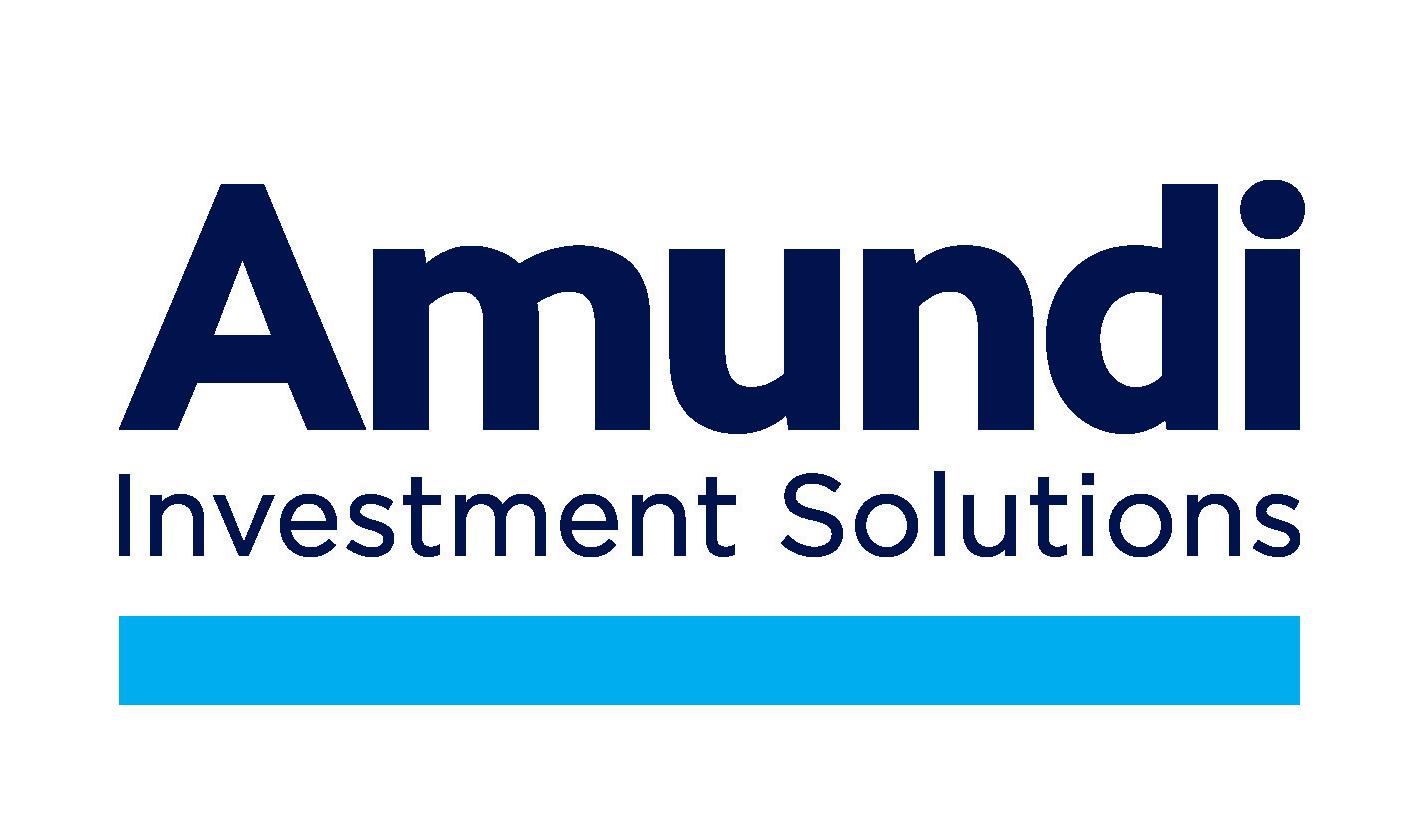
Contact: Tanya Bishop, Senior Vice President Address: 130 Adelaide St. W., Ste. 2207, Toronto, ON, M5H 3P5
PH: 647-201-4225
Email: tanya.bishop@amundi.com
Website: www.amundi.ca
ESG/SRI products or services: ESG Advisory: ESG Policy Design, ESG Portfolio Screening & Action Plan, ESG Market Standards, ESG Rating Model; ESG Investment Solutions: according to Amundi’s Responsible Investment Policy, according to clients’ Responsible Investment Policy, Manager Selection/Responsible Funds; ESG Services: ESG Reporting, ESG Training, Integrated ESG Data Solutions and ALTO Sustainability Platform; ESG OCIO: Integrated ESG consulting and services with assets under advisory management
ESG/SRI products or services first offered: 1986 –Amundi’s first French ethical fund
Number of ESG/SRI Canadian pension fund clients: 16 Canadian pension fund clients with ESG-related considerations
Philosophy/style: As a responsible asset manager, our role is to create long-term sustainable value for our customers and all our stakeholders, taking into account the major challenges facing our world and society.

BGO
Contact: Yvonne Davidson
Principal, Capital Raising and Investor Relations
Address: 1 York St., Ste. 1100, Toronto, ON, M5J 0B6
PH: 647-335-4096
Email: yvonne.davidson@bgo.com
Website: www.bgo.com
ESG/SRI products or services: BGO Canada does not have a dedicated ESG/SI fund.
However, BGO’s Sustainable Investing (SI) Team helps deliver ESG strategies to our global investment platform. The SI Team partners with our investment and real estate management professionals to help integrate ESG across the asset life cycle in alignment with client goals. These strategies help target risk mitigation, value creation, industry stewardship, and stakeholder engagement to help deliver ESG performance for our clients.
ESG/SRI products or services first offered: Although BGO does not have any dedicated ESG products, the Prime Canadian Property Fund has a long, demonstrated track record of ESG performance and recognition. Prime Canadian has participated in GRESB for over a decade and is classified as Article 8 under the EU Sustainable Finance Disclosure Regulation (SFDR) as of early 2025.
Philosophy/style: As a fiduciary, BGO approaches sustainable investing from both a risk mitigation and value creation perspective to help enhance the long-term financial and operational resiliency of the asset.

BEUTEL, GOODMAN & COMPANY LTD.
Contact: Kimberley Woolverton
Managing Director, Head of Institutional Address: 2000-20 Eglinton Avenue W., Toronto, ON, M4R 1K8 PH: 416-545-5367 ext. 367
Email: kwoolverton@beutelgoodman.com
Website: https://www.beutelgoodman.com/
ESG/SRI products or services: Beutel Goodman Canadian Sustainable Bond Strategy; Beutel Goodman Sustainable Canadian Equity Strategy; Beutel Goodman US Sustainable Bond Strategy
ESG/SRI products or services first offered: We have long incorporated material ESG factors into our research and would apply ESG exclusions for our clients per their request. In 2022, we launched our first sustainable fund, the Beutel Goodman Sustainable Bond Fund (private fund for discretionary managed clients).
Number of ESG/SRI Canadian pension fund
clients: As of June 30, 2025, there are three ESG/ SRI Canadian pension fund clients.
Philosophy/style: ESG factors have the potential to materially affect the long-term financial sustainability of a business, which is an important focus of our analytical process. We integrate ESG factors in our analysis of a company to pursue financial performance.

Contact: Mike Sandrasagra
Vice President, Global Head of Consultant Relations
Address: 181 Bay St., Ste. 4510, Toronto, ON, M5J 2T3
PH: 416-869-8980
Email: msandrasagra@burgundyasset.com
Website: burgundyasset.com
ESG/SRI products or services: While all of Burgundy’s investment mandates integrate ESG considerations, select Socially Responsible Investing (SRI) Funds and Foundation Funds apply negative screens and exclude a defined set of industries. These specific SRI and Foundation Funds exclude investments in companies directly producing tobacco, armaments, and cannabis, as well as gambling-related companies.
ESG/SRI products or services first offered: 2002 Number of ESG/SRI Canadian pension fund clients: 0; Most clients that invest in our Foundation and SRI Funds are Canadian foundations and endowments.
Philosophy/style: At Burgundy, we take an ESG integration approach in our investing. This involves incorporating material environmental, social, and governance considerations in our investment process and decision-making.

Contact: Mike Tuira
Vice President, Institutional
Address: 181 Bay St., Ste. 3100, Toronto, ON,
PH: 416-815-2079
Email: Mike.Tuira@capgroup.com
Website: capitalgroup.com/ca
ESG/SRI products or services: Capital Group manages US$3.0 trillion in actively managed equity, fixed-income, and multiasset investment portfolios through funds and segregated accounts worldwide. We integrate ESG issues into our investment approach, The Capital System, across our actively managed equity, fixed-income, and multi-asset fund strategies. Investment analysts and portfolio managers are responsible for analyzing material ESG risks and opportunities and assessing how they may impact an issuer’s ability to generate long-term value. For our regional Europe and Asia client offerings, we also manage SFDR (EU Sustainable Finance Disclosure Regulation) Article 8 and OEIC funds, which extend beyond our ESG integration process to implement binding ESG criteria: ESG and norms-based screens, as well as in some cases, a carbon footprint target; and three SFDR Article 8 global multi-thematic Future Generations funds – one global equity, one global corporate bond, and one global balanced. These strategies seek to invest in issuers whose products and services positively contribute to environmental and social objectives, based on alignment to the UN Sustainable Development Goals (SDGs). On client request, we manage segregated accounts that accommodate clientspecific ESG criteria such as exclusions or a carbon footprint target.
ESG/SRI products or services first offered: 2022 Philosophy/style: We analyze material ESG issues as a part of our investment research to better understand long-term risks and opportunities as we strive to maximize returns for our investors. ESG integration enhances our investment research, due diligence, and engagement efforts.
Address: 161 Bay St., Ste. 2230, Toronto, ON, MSJ 2S1
PH: 416-980-2768
Email: carlo.dilalla@cibc.com
Website: www.cibcam-institutional.com
ESG/SRI products or services: CIBC Sustainable Canadian Core Plus Bond Fund; CIBC Sustainable Conservative Balanced Solution; CIBC Sustainable Canadian Equity Fund; CIBC Sustainable Balanced Solution; CIBC Sustainable Global Equity Fund; CIBC Sustainable Balanced Growth Solution; CIBC Socially Responsible Balanced Pool; CIBC Sustainable Global Equity Pool; customized sustainable investment solutions in separately managed accounts
ESG/SRI products or services first offered: CIBC Asset Management has offered SRI segregated mandates to clients for 30+ years. In 2017, we became PRI signatories and have added new capabilities and services year over year.
Philosophy/style: At CIBC Asset Management, we believe that ESG factors create risks and opportunities for investors, and it is in the best interest of our clients to consider these factors when making an investment decision.

Contact: Jean-Philippe Lemay
Managing Director, Head of Institutional Sales, Global
Address: 1800 McGill College Ave., Ste. 1300, Montreal, QC, H3A 3J6 PH: 514-287-0110
Email: JPLemay@cclgroup.com
Website: www.cclgroup.com
ESG/SRI products or services: Global Equity, International Equity, Emerging Markets Equity, Emerging Markets Credit, Market Neutral, Canadian Fixed Income, Canadian Equity, Real Estate, Infrastructure, and Commercial Mortgages
ESG/SRI products or services first offered: 1995
CIBC ASSET MANAGEMENT INC.
Contact: Carlo Dilalla Managing Director and Head, Institutional Asset Management
Number of ESG/SRI Canadian pension fund clients: 229
Philosophy/style: We believe that many ESG factors have a material impact on investment performance across time horizons and
asset classes. As such, all investment teams spend significant time researching ESG risks and opportunities and engaging with company management on ESG topics.

Contact: Natalie Bisaillon
Managing Director and Chief of Institutional Client Relations
Address: 1, Complexe Desjardins, 20th Fl., South Tower, Montreal, QC, H5B 1B2 PH: 514-214-5742
Email: natalie.bisaillon@desjardins.com
Website: www.dgam.ca
ESG/SRI products or services: Desjardins RI Active Canadian Bond – Net-Zero Emission Pathway – ETF; Desjardins RI Canada –Net-Zero Emission Pathway – ETF; Desjardins RI USA – Net-Zero Emission Pathway – ETF; Desjardins RI Developed ex-USA ex-Canada – Net-Zero Emissions Pathway – ETF; Desjardins RI Emerging Markets –Net-Zero Emissions Pathway – ETF; Desjardins RI Canada Multifactor – Net-Zero Emissions Pathway – ETF; Desjardins RI USA Multifactor –Net-Zero Emissions Pathway – ETF; Desjardins RI Developed ex-USA ex Canada Multifactor –Net-Zero Emissions Pathway – ETF; Desjardins RI Emerging Markets Multifactor – Net-Zero Emissions Pathway ETF; Desjardins Sustainable American Equity ETF; Desjardins RI Global Multifactor – Fossil Fuel Reserves Free ETF; Desjardins Sustainable Conservative Portfolio; Desjardins Sustainable Moderate Portfolio; Desjardins Sustainable Balanced Portfolio; Desjardins Sustainable Growth Portfolio; Desjardins Sustainable Aggressive Portfolio; Desjardins Sustainable Global Equity Portfolio; Desjardins Sustainable Short-Term Income; Desjardins Sustainable Canadian Bond; Desjardins Sustainable Candian Equity Income; Desjardins Sustainable Canadian Equity; DGAM –Systematic ESG Emerging Markets Equity Fund; DGAM – Systematic ESG World Equity Fund; DGAM Canadian Bond Fossil Fuel Free Fund; DGAM Canadian Equity Fossil Fuel Free Fund; Advisory Mandate RI Canadian Bonds; Advisory Mandate RI Canadian Bonds
ex Fossil Fuel; Advisory Mandate RI Short Term Canadian Bonds; Advisory Mandate RI Canadian Equity; Advisory Mandate RI Canadian Equity-Ex Fossil Fuel ESG/SRI products or services first offered: Desjardins has a long track record and experience in the responsible investment (RI) space, with our first environmental fund created in 1990.
Number of ESG/SRI Canadian pension fund clients: 8
Philosophy/style: At DGAM, Responsible Investment is key to our management philosophy. We believe Responsible Investment is consistent with our mandate as portfolio managers, requires action and innovation, means taking a longer-term vision, and involves inspiring and influencing.

Contact: Sarah Aves Head of Institutional Clients, Canada Address: 200 Bay St., Ste. 3800, South Tower, Toronto, ON, M5J 2J1 PH: 416-364-3711
Email: globaldistributionanalytics@fieracapital. com
Website: https://www.fieracapital.com/en ESG/SRI products or services: Fiera Apex International Equity Ethical strategy; Fiera Apex U.S. Core Ethical strategy; Fiera ASFI - Active Universe Ethical strategy; Fiera ASFI - Active Universe Ethical Fossil Fuel Free strategy; Fiera Atlas Global Companies Ethical strategy; Fiera Balanced Ethical strategy; Fiera Canadian Equity Ethical strategy; Fiera Canadian Equity Fossil Fuel Free strategy; Fiera Canadian Equity Ethical Fossil Fuel Free strategy; Fiera Global Impact Strategy; Fiera Global Sustainable and Impact Bond strategy; Fiera Integrated Fixed Income - Short and Mid Term Bond strategy; Fiera International Equity Ethical strategy; Fiera US Equity Ethical strategy ESG/SRI products or services first offered: Fiera Capital has been offering ethical strategies since its creation in 2003 and became a UN PRI signatory in 2009.
Number of ESG/SRI Canadian pension fund clients: 14
Philosophy/style: Sustainable investing is core to our investment philosophy, and Fiera Capital is of the view that organizations that understand and successfully manage material environmental, social, and governance (ESG) factors and associated risks and opportunities create more resilient, higher-quality businesses.
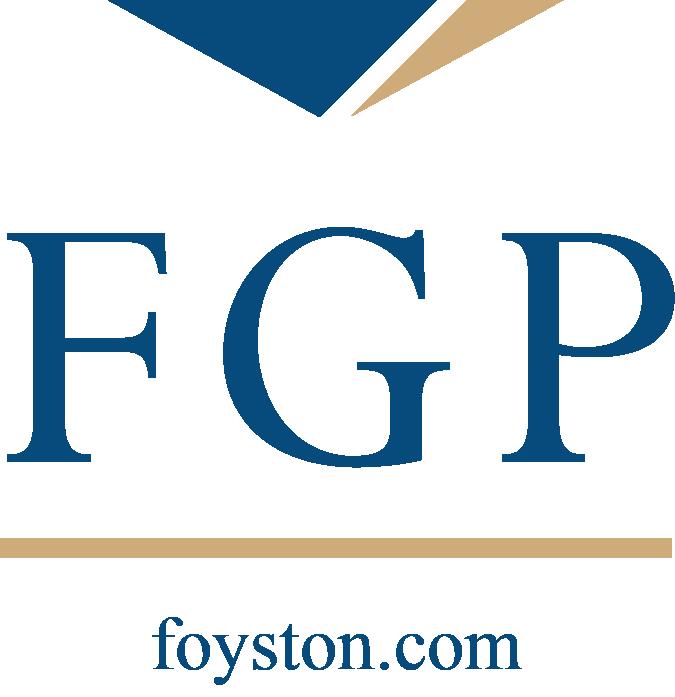
Contact: Gabriel Lopezpineda
Senior Vice President & Client Relationship Manager, Head of Institutional
Address: 1 Adelaide St. E., Ste. 2600, Toronto, ON, M5C 2V9
PH: 416-848-1948
Email: glopezpineda@foyston.com
Website: www.foyston.com
ESG/SRI products or services:
In addition to offering one standalone ESG product, the FGP Canadian Ex-Energy Equity strategy, we integrate ESG into all our investment strategies.
ESG/SRI products or services first offered: 2018
Number of ESG/SRI Canadian pension fund clients: 19
Philosophy/style: Companies that effectively address ESG issues tend to be more attractive long-term investments. Assessing ESG factors, including actively engaging with company management to encourage and educate them on best practices and policies, has long been a component of our fundamental investment analysis.

Contact: Dennis Tew, Head of Sales, Canada Address: 200 King St. W, Ste. 1400, Toronto, ON, M5H 3T4
PH: 416-957-6023
Email: dennis.tew@franklintempleton.ca
Website: www.franklintempleton.ca
ESG/SRI products or services: Each of our
investment teams independently evaluate ESG factors from multiple angles, which vary by asset class (Equity, Fixed Income & Alternatives), sub-asset class, regional focus, or individual mandates.
ESG/SRI products or services first offered: Introduced in 1954 by Sir John Templeton, the Templeton Growth Fund was our firm’s first product that considered socially responsible investment criteria, during the stock selection process.
Number of ESG/SRI Canadian pension fund clients: In Canada, we currently have 6 pension plans invested in sustainable focus mandates.
Philosophy/style: Each of Franklin Templeton’s investment teams perform an autonomous, sustainable investment approach with dedicated personnel in each asset class, region, and specialism. They leverage the expertise across these teams, and in 2021 a firm-wide Stewardship and Sustainability Council was established to provide a forum for dialogue and sharing of best practices around sustainable investing.

Contact: Robin Lacey
Head of Institutional Asset Management
Address: 199 Bay St., Ste. 2700, Toronto, ON, M5L 1E8
PH: 416-364-8341
Email: rlacey@guardiancapital.com
Website: www.guardiancapital.com
ESG/SRI products or services: GEM Canadian Equity Fund; GEM Global Equity Fund; GEM Fixed Income Fund; GEM Balanced Fund; Guardian Canadian Equity Carbon Constrained Strategy; Guardian Sustainable Funds
ESG/SRI products or services first offered: 2005
Philosophy/style: ESG considerations are integrated into all our investment processes and stewardship activities – commonly referred to as ESG Integration and Active Ownership. Our GEM products apply negative screens to exclude companies involved in tobacco, weapons, and other controversial activities.
Contact: Harry Marmer
Executive Vice President
Address: 1 First Canadian Place, 100 King St. W., Ste. 5900, P.O. Box 477, Toronto, ON, M5X 1E4
PH: 416-913-3907
Email: hmarmer@hillsdaleinv.com
Website: www.hillsdaleinv.com
ESG/SRI products or services:
Hillsdale offers customized E, S, and G testing, screening, and weighting services for institutional investors within their investment strategies. For more than 29 years, Hillsdale has invested in companies with attractive financial attributes and sustainable business models. Since 2011, we have focused on ESG strategy testing, screening, weighting, and integration. This includes evaluating companies from the perspectives of corporate governance, accounting integrity, board diversity, executive compensation, and CEO quality, as well as the use of a significant number of carbon emission and environmental impact metrics. We are committed to ESG investing by integrating environmental, social, and governance factors across our investment strategies and stewardship practices. We also participate in key industry initiatives, including the Canadian Coalition for Good Governance (CCGG) and the Principles for Responsible Investment (PRI). Hillsdale specializes in ESG strategy testing, screening, weighting, and implementation since 2011. E, S, and G factors are considered and evaluated in our investment process on a strategy-by-strategy basis alongside all other potential alpha and risk signals. E, S, and G factors provide another lens through which we assess stocks. Hillsdale’s best practices and standards for ESG/RI-based investing: Tone set by leadership; Seven stewardship principles; Sound practices for determining materiality; A commitment to upholding data quality and integrity; An open source research platform; A strong risk management framework; A commitment to investment excellence; Evaluating the carbon footprints of every portfolio
A client-centric approach on RI/ESG
ESG/SRI products or services first offered: 2011 Number of ESG/SRI Canadian pension fund clients: 1
Philosophy/style: Hillsdale’s philosophy combines the best of fundamental thinking, tested through a proven, rigorous quantitative methodology, with continually evaluated results relative to expectations. We believe that successful investment processes are adaptive in nature, searching for new alpha sources, potential strategy enhancements, and advanced risk management techniques.

Contact: Dexton Blackstock, CFA Head of Institutional Business Development | Central & Western Canada
Address: 40 Temperance St., Ste. 1800, Toronto ON, M5H 0B4 Phone: 416-363-7417
Email: dexton.blackstock@jflglobal.com Website: jflglobal.com
ESG/SRI products or services: Segregated and pooled fund management for values-based mandates; JF FFF Balanced Fund; JF FFF Bond Fund; JF Sustainable and Impact Bond Fund; JF FFF Canadian Equity Fund; JF FFF Global Equity Fund; JF FFF Money Market Fund
ESG/SRI products or services first offered: 2017
Philosophy/style: As investors with a longterm perspective, Jarislowsky Fraser’s focus has consistently been to invest in companies that meet our quality criteria. The consideration of financially material, industry-specific ESG issues is intrinsic to our investment philosophy as a helpful lens to gauge the quality of an investment.

Contact: François Forget Head of Distribution – Canada
Address: 1000 de la Gauchetière W., Ste. 3100, Montreal, QC, H3B 4W5
PH: 514-518-8587
Email: fforget@pictet.com
Website: www.am.pictet
ESG/SRI products or services: Positive tilt: Absolute Return Fixed Income (ARFI); Asia Equities ex Japan; China Equities; Chinese Local Currency Debt; Digital; Emerging Markets; Family; Global Bonds; Global High Yield; Japanese Equity Opportunities; Japanese Equity Selection; Premium Brands; Quest AI-Driven Global Equities. Best in class: Emerging Debt Blend; Emerging Local Currency Debt; Global Emerging Debt; Positive Change; Quest Europe Sustainable Equities; Quest Global Sustainable Equities. Positive impact: Biotech; Clean Energy Transition; Climate Government Bonds; Global Environmental Opportunities (GEO); Global Megatrend Selection (GMS); Global Sustainable Credit; Global Thematic Opportunities (GTO); Health, Human, Nutrition, Regeneration, Robotics, Security, Smart City, Timber, Water. ESG integrated: all other strategies
ESG/SRI products or services first offered: 1995
Philosophy/style: A global leader in environmental and sustainable strategies, responsibility is central to our way of thinking. We systematically integrate ESG in all investment processes and expect issuers to respect planetary boundaries and international standards on governance, human rights, and ethical business practices.

Contact: Angela Valdes, Vice President
Address: 20 Adelaide St. E., Ste. 1201, Toronto, ON M5C 2T6
PH: 416-364-3001
Email: AValdes@Stonebridge.ca
Website: Stonebridge.ca
ESG/SRI products or services: Among Stonebridge Financial’s various strategies, it launched Canada’s first infrastructure debt fund in 2012 (and its second in 2014) focused on social infrastructure, renewable energy, and
healthcare sectors, which provide tangible exposure to ESG-oriented investments, including Indigenous-owned projects. Originally designed in partnership with PPP Canada and leading pension consultants, Stonebridge Infrastructure Debt Fund I (SIDF I)raised over $200 million in institutional investor commitments, followed by SIDF II, which was 300% larger at over $600 million – notably, these investment-grade funds averaged 39% exposure to projects with Indigenous investments. Following Stonebridge Financial’s 25th anniversary, its third fund (SIDF III) will be launched in late 2025 with a similar focus, with a target of $1 billion of capital commitments and continued exposure to Indigenous projects.
ESG/SRI products or services first offered: 2012 Clients: Stonebridge Financial manages and administers private debt and credit on behalf of Pension Plans, Labour Unions, Insurance Companies, Banks, Municipalities, Foundations/ Endowments, Universities, Government Entities, Other Managers, as well as Corporate and Other Institutional Investors. Co-Investment opportunities for investors as well as Subadvisory Services for other managers also available. Philosophy/style: 100% focused on private debt and credit investments across infrastructure, renewable power, healthcare, real estate, and corporates, Stonebridge Financial has been an early adopter and ongoing promoter of environmentally sustainable and socially responsible finance since the firm’s founding a quarter-century ago. A UN PRI signatory, recent industry awards received by the firm and its leadership include from Clean50 Lifetime Achievement, Canadian-Council of PPPs Merit Award, First Nations Power Authority Allyship Award, Sustainable Finance Award, Best Infrastructure Fund Manager, Infrastructure Fund of the Year, P3 Debt Provider of the Year, and Responsible Investor of the Year, among others.

Contact: Anne Meloche
Head of Institutional Business
Address: 1 York Street, Toronto, ON, M5J 0B6
PH: 514-347-6137
Email: anne.meloche@sunlife.com
Website: www.slgiinstitutional.com
ESG/SRI products or services: As a manager of managers, our RI activities are focused on sub-advisor selection and ongoing monitoring of their RI practices
Philosophy/style: Our selection of sub-advisors is at the core of our investment process. We assess potential sub-advisors based on several factors, including organizational resilience, strategic alignment, systems and analytics, and team/resources. Our assessment includes consideration of the sub-advisor’s approach to RI and focuses on three key pillars: their firm-wide commitment, the implementation of ESG considerations as part of their strategy, and their approach to active stewardship.

T.
Contact: Lauren Bloom, Head of Canada Address: 77 King St, W., TD North Tower, Ste. 4240, Toronto, ON, M5K 1G8
PH: 647-355-6887
Email: lauren.bloom@troweprice.com
Website: troweprice.com/Canada
ESG/SRI products or services: T. Rowe Price Global Impact Equity Strategy; T. Rowe Price US Impact Equity Strategy; T. Rowe Price Global Impact Credit Strategy
ESG/SRI products or services first offered: 2020 Philosophy/style: Our Impact investment approach is defined by its dual mandate, which simultaneously seeks both benchmark outperformance and positive environmental and social impact by investing in durable, growing businesses with measurable impact criteria.

Contact: Mark Cestnik
Managing Director, Head of Global Institutional Distribution
Address: 161 Bay St., Toronto, ON, M5J 2T2
PH: 416-307-5878
Email: mark.cestnik@tdam.com
Website: https://www.td.com/ca/en/global-
ESG/SRI products or services: TD Asset Management Inc. (TDAM) offers the following ESG-focused funds: TD North American Sustainability Equity Fund, TD North American Sustainability Balanced Fund, TD North American Sustainability Bond Fund, TD Emerald Low Carbon Global Equity Index Non-Taxable Investor Pooled Fund Trust, TD Emerald Low Carbon Global Equity Index Pooled Fund Trust, and TD Emerald Low Carbon / Low Volatility Global Equity Pooled Fund Trust. For details, please refer to the “ESG-Focused Funds” section of TDAM’s Sustainable Investment and Climate Report 2024, which is available on our public website (https://www.td.com/ca/en/globalinvestment-solutions/responsibility/resources).
Additionally, for institutional clients who set their own environmental objectives and targets, TDAM is able to customize solutions that can support their ESG-related investment objectives. ESG/SRI products or services first offered: 2020 Number of ESG/SRI Canadian pension fund clients: 11
Philosophy/style: TDAM’s approach to sustainable investing aligns with its philosophy of serving its securityholders’ investment goals and adhering to its fiduciary responsibility as an asset manager. For more details, please visit TDGIS Sustainable Investment (https://www. td.com/ca/en/global-investment-solutions/ responsibility/esg).

Contact: Alana Dubinski
Chief Compliance Officer, Head of ESG Strategy
Address: 25 York St., Toronto, ON, M5J 2V5
PH: 416-527-2859
Email: alana.dubinski@telushealth.com
Website: https://www.telus.com/en/health/ employers/consulting
ESG/SRI products or services: ESG + Indigenous Manager Research: ratings, due-diligence, and manager selection; Responsible Investment Integration: investment beliefs/policy development, stress testing, ESG data/reporting, proxy voting analysis/ manager engagement; Climate scenario analysis and modelling; ESG Education: members/committees; ESG Dashboard: qualitative and quantitative data and ESG ratings; Governance: CAPSA Risk Management
compliance; Organization/operational consulting (TELUS Environmental Solutions)ESG/SRI products or services first offered: 2018 Number of ESG/SRI Canadian pension fund clients: 18
Philosophy/style: We build bespoke portfolios using top-tier strategies, integrating ESG factors practically, adaptively, and with an eye toward evolving best practices, meeting clients where they are, and helping them progress toward their ESG goals.

Contact: Andy Kong
Head of Global Business Development
Address: 600 de Maisonneuve Blvd. St. W., Ste. 2510, Montreal, QC, H3A 3J2
PH: 514-991-5754
Email: akong@vanberkomglobal.com
Website: www.vanberkomglobal.com
ESG/SRI products or services: Canadian Small Cap Equity Strategy; US Small Cap Equity Strategy; US Small-Mid Cap Equity Strategy; Global Small Cap Equity Strategy; International Small Cap Equity Strategy
ESG/SRI products or services first offered: 1991 Number of ESG/SRI Canadian pension fund clients: 16
Philosophy/style: Van Berkom’s investment philosophy is built on the belief that the best opportunity for investment success is found by investing in high-quality, wellmanaged Small-Cap companies at discounted prices and holding them for the long-term. High-quality companies are defined as those that generate free cash flow, produce high returns on capital, have a competitive advantage in their marketplace, and successful management.

Contact: Jeffrey Adams Chief Investment Strategist and Director
Address: 183 Terminal Ave., 8th Fl., Vancouver, BC, V6A 4G2
PH: 604-318-3389
Email: jeffrey_adams@vancity.com
Website: www.vcim.ca
ESG/SRI products or services: VCIM Global Equity Fund, VCIM Global Small Cap Fund, VCIM Global Low Volatility Fund, VCIM Global Impact Fund, VCIM Canadian Equity Fund, VCIM Income Fund, VCIM Bond Fund, VCIM Short Duration Bond Fund
ESG/SRI products or services first offered: VCIM’s history in ESG/SRI dates back to 2001, when it first partnered with Renewal Partners to create Real Assets to launch a series of SRI mutual funds.
Number of ESG/SRI Canadian pension fund clients: 1
Philosophy/style: VCIM’s investment process integrates ESG analysis with in‐depth financial analysis to identify high-quality companies that have the potential to succeed in a world of evolving environmental risk, increased social expectations, and changing shareholder demands.
FOR MATT Snyder, workplace wellness isn’t a blanket approach but, rather, a layered strategy shaped by the individual needs of employees.
The chief human resources officer at SE Health believes one of the most overlooked strategies when it comes to employees’ financial well-being is earned wage access or on-demand pay. He sees this strategy not as a silver bullet but as a critical tool in a broader, more flexible response to financial stress in the workplace.
“If they’re not accessing their pay early, they could be going to Money Mart or another loaning company,” Snyder says. “They’re paying a significant interest on credit cards, spiralling into credit card debt. Some people are going to need pay on demand because they’re going to get hit [at] certain points where they’re going to be in a bit of trouble, and they’re going to just need that cash now versus needing to wait.”
In those moments, the ability to access earned wages could be the difference between staying afloat and slipping into debt. He doesn’t describe it as a problem to solve with a single fix but as “a multifaceted challenge” that requires a range of adaptable, individualized solutions.
From his perspective, on-demand pay makes sense as both an immediate support and part of a longer-term shift in how employers structure pay. He believes the future lies in offering more than just early access to wages. Giving employees control

over their pay schedule, even letting them choose how often they’re paid, could further empower financial well-being.
“Most pay-on-demand situations, you’re paying a fee to access your pay early. If you can get to the spot where people are getting paid whenever they want it directly from the employer, you cut that out,” Snyder says.
That, he argues, “takes it to the next level of making things affordable. If employers can help their employees with being paid more regularly, I think it creates a significant advantage.”
The current bi-weekly or monthly pay cycle, he says, is a leftover from a bygone era.
He emphasizes that prior to World War I, it was possible for employees to be paid every day because employers didn’t have to worry about tax or benefit deductions.
“We’ve stuck with an antiquated model of pay that came in for very good reasons at a particular time. As employers, we could do better,” he says.
He underscores that the technology now exists to pay workers daily while still managing deductions and payroll compliance “and have it all line up at the end of the two-week cycle.”
There’s more than just compassion behind this thinking. Snyder asserts that the business case for pay flexibility is strong.
“If you support and enable your people by meeting their needs around physical, mental, spiritual and financial health, you are going to get the performance you’re looking for,” he says. “You get less sick time, less voluntary attrition, more discretionary effort, more innovation, better care, better quality service. That’s what you want if you want to impact the bottom line.”
And yet, financial stress remains a stubborn barrier to wellness. He acknowledges the criticism as some say it’s the schools’ job to teach financial literacy, not employers’. But Snyder disagrees.
“You could argue those things should all be taught somewhere else, but they’re not,” he says. “We do training on all kinds of things that aren’t taught elsewhere. We do that training because it’s a need that has to be done to accomplish the mission at hand. It’s an unmet need that a lot of staff have. If we can meet it again, we reduce some stress.”
For Snyder, it’s about seeing employees not just as labour units but as people living in a complicated, expensive world. And that means letting go of legacy mindsets.
“It involves us unlearning some of what we’ve all traditionally learned and challenging our own stereotypes around what is or isn’t the responsibility of the employer,” he says.
Ninety One’s Archie Hart describes how EM markets have become more resilient
FOR DECADES, emerging markets were shorthand for volatility risk. Their equity markets were one and a half to two times more volatile than their developed peers, and many investors treated them as a peripheral allocation rather than a core holding. That perception lingers, but it no longer reflects reality.
Today, the picture looks very different. The gap has steadily narrowed, and in some periods, such as the March 2020 pandemic sell-off, US equities were more volatile than emerging markets.
That shift is no accident. It reflects not only changes in index composition but also
a deeper transformation. Over the past two decades, many EM economies have embraced pragmatic policies, stronger fiscal discipline, and institutional reform. At the corporate level, disclosure standards, governance, and operational practices have converged with global norms. Collectively, these reforms have reshaped what it means to invest in emerging markets.
The EM-ification of developed markets
Not only has emerging market volatility fallen, but the reverse has also been true: developed markets have started to look more
like emerging ones. Inflation shocks, abrupt policy pivots, and heightened political risk are no longer confined to EM.
This “EM-ification” of developed markets has blurred the old distinctions. The world where developed markets were synonymous with stability and EM with risk has gone. Investors now face a more level playing field − and in some cases, EM fundamentals are stronger. Fiscal positions are often more conservative, central banks more orthodox, and policy direction more predictable in EM than in parts of the developed world.

For global equity portfolios that remain structurally underweight EM, this shift demands attention.
The past five years have provided repeated stress tests. In 2020, emerging markets weathered the pandemic downturn better than the US. In the first half of 2025, despite radical trade policy changes in Washington and conflict in the Middle East, EM equities again held up well.
Why? Because the policy backdrop in many EM economies is clearer and reforms are more consistent and deeper. China has reaffirmed the role of the private sector. India is pouring concrete into infrastructure. The Gulf states are pressing ahead with economic diversification. Asia continues to anchor the global technology supply chain.
Economic, fiscal, and monetary policies across EM have become more orthodox, better understood, and more credible. And the

corporate landscape has advanced too: governance, disclosure, and transparency standards have risen sharply over the past two decades, strengthening investor confidence.
Of course, emerging markets are broad and diverse. Careful stock selection matters. But the breadth of opportunity is striking:
• China: Semiconductor firms like GigaDevice and Anji Microelectronics are at the intersection of global AI demand and China’s domestic push for self-sufficiency. Tencent, through
below − developed markets. Reforms in Brazil, South Korea, India, and elsewhere have lifted governance and transparency. Companies are increasingly aligned with international standards.
Meanwhile, developed markets have absorbed many of the risks once associated with EM. The lines have blurred. In some respects, EM now looks the steadier partner.
Emerging markets have been transformed. No longer defined solely by volatility, they now represent resilience, stronger fundamentals, and pragmatic policy. For insti -
“No longer defined solely by volatility, [emerging markets] now represent resilience, stronger fundamentals, and pragmatic policy… The challenge is that allocations have not kept pace”
WeChat, has created an ecosystem that underpins payments, shopping, and travel for a billion users.
• India: Infrastructure investment is accelerating, with 50 new airports under construction − echoing China’s transformation two decades ago.
• UAE: At a time when much of the world is retreating behind barriers, the UAE is doubling down on openness to trade, capital, and people.
• Brazil: Interest rates of 15 percent have stifled growth, but such levels are unsustainable. A turn in the rate cycle could release long-pent-up opportunity.
The perception of EM as the volatile corner of global equities is outdated. Volatility has converged with − and at times fallen
tutions, the challenge is that allocations have not kept pace. Portfolios remain structurally underweight at a time when EM offers both growth and stability, while developed markets grapple with their own uncertainties.
The “EM-ification” of developed markets has rewritten the investment playbook. Emerging markets are not the weak link in global equities − they may in fact be the stronger foundation. For long-term investors, it is time to reassess.
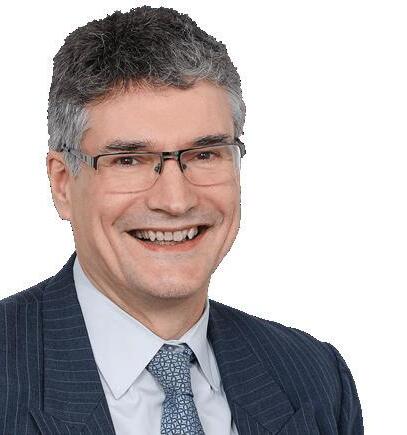
IN SPITE of growing economic challenges all over the world, responsible investments hit the $3 trillion mark last year in Canada for the third year in a row. The numbers are even higher globally – and growing. And although these environmental, social, and governance (ESG) investments are not new, they are now viable investment options in retirement plans.
While plan sponsors may not be thinking about ESG options, plan participants certainly are. Roughly three-quarters of Canadians say organizations have a responsibility to act sustainably and mitigate environmental impacts – but only one quarter of the same group knows how to find the relevant information on specific organizations.
Investments with a purpose
Although the acronym is everywhere, not everyone understands what ESG investments are. On the simplest level, they are investments like any other. But those who are looking for ESG investments tend to be people who are concerned about companies’ business practices.
Specifically, ESG refers to three aspects of business practice:
Environment: climate change, greenhouse gas emissions, deforestation
Social: working conditions, local communities, employee relations
Governance: executive pay, corruption, board diversity
Managers may incorporate these criteria into their decision-making on investments. The idea is that companies that focus on these issues tend to be stronger and more sustainable – and therefore better investments.
As with any other new type of investment, ESG funds may come with risk. Many have asked whether these funds actually underperform the market. Or perhaps these funds may be politically driven or fail to meet ESG standards. Proponents of incorporating ESG considerations argue that it will lead to a better understanding of financial and non-financial risks, which may lead to better investment returns. Others argue that both investors and companies have a responsibility, irrespective of financial considerations, to improve environmental, social, and governance circumstances. This second line of argument is of relevance to investors who want to be faithful to their concerns as they invest. By engaging investment managers in this dialogue, investors can influence their approach to investing.
The good news is that plan sponsors and their advisors can mitigate this risk through thoughtful, data-driven decision-making. When introducing an ESG investment option in your retirement plan, keep these five tips in mind:
1. It’s an imperfect world. Many people are drawn to ESG investments because

they care deeply about climate change or diversity. Some organizations are more successful in some areas than others, though, so it may be challenging to identify a single fund that meets everyone’s needs. Consider funds that hit as many of the high points as possible. It is important to spend time to articulate your ESG investment beliefs.
2. Do your homework. Marketing may be misleading. Many funds advertise themselves as ESG driven, but the fund may not address the same concerns. Plan sponsors need to do

“Although these environmental, social, and governance (ESG) investments are not new, they are now viable investment options in retirement plans”
their due diligence and independently confirm the selection as they do with other investments. Review the suitability of managers and their ability to integrate your ESG needs, and have existing managers articulate how they employ ESG relevant
criteria into their investment process and decisions.
3. Gather your data. Before selecting specific investments, find out what your plan members care about. For DC and group RSP plans, for example, create a survey to gather the data and then use
that information to drive fund selection. Quantitative data can also provide an industry comparison and detailed ESG measure of underlying investment holdings for each manager, and alongside other material information, to help with investment decision-making. Establish appropriate standards for integrating ESG into investing decisions to ensure continuous alignment with ESG policies and regulatory requirements for disclosure.
4. Educate plan participants. Just like plan sponsors, plan members need to be educated on ESG investing − what it is, the reasons it might make sense for individual investors, and its effect on participants’ portfolios. Show how investment managers will be selected, with consideration given to their beliefs relating to ESG issues, their track record of incorporating ESG factors into the investment management process, their practices and policies regarding voting using best practice fiduciary standards and guidelines, and their dialogue/engagement on ESG-related issues.
5. Consider investment potential. It’s tempting for plan sponsors to adopt an ESG fund to meet plan members’ expectations, but be sure these funds have a solid economic rationale before inclusion. This means the companies must not only be “virtuous” − they must also perform well. In the end, an investment needs to earn the return required by the plan to meets its obligations.
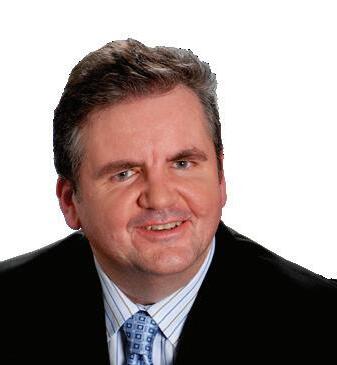

DESPITE SURGING investments in health and wellness, the overall health of Canadian workers is on a downward trend. And for Canada Life health consultants Ilana Korble and Carolyn Chapman, that contradiction reveals a bigger problem and a growing cost for plan sponsors.
“In spite of increasing spending, the health of Canadians is actually deteriorating,” Korble said at the Canadian Pension & Benefits Institute (CPBI) Forum earlier this year.
She emphasized that Canada’s healthcare system is currently in “a paradox” because while public and private spending on health and wellness has soared, nearly half of Canadians now have at least one chronic condition.
Meanwhile, rates of obesity and type 2 diabetes have nearly doubled in the last 20 years.
“In 2023, over 30 percent of Canadian adults were classified as obese. That increased from 21 percent 20 years ago, and then from 9 percent from 40 years ago, and we know that obesity is a major risk factor for many diseases. Over approximately the last 20 years, the incidence of type 2 diabetes in Canada also increased,” she said, adding that 6 percent of adult Canadians who live with pre-diabetic symptoms could end up living with diabetes.
“We have an opportunity here to mitigate that trajectory,” she added.
Korble also stressed that benefit plans are absorbing the shock, noting Canada Life
has seen a continued increase in claims in their short-term and long-term disability block. And more of those claims involve polymorbidities. Mental health, she added, is now linked to nearly 40 percent of short-term disability claims.
So, what’s driving the decline in health despite all this investment? Korble believes the healthcare system is focused heavily on treatment versus prevention as just 5 percent of Canada’s healthcare spending went to prevention in 2023, she noted.
She likened the current system to a leaky bucket. The more money pumped in, whether through medications, wellness programs, or new technologies, the less return on investment sponsors are seeing.

The bucket, she added, represents the healthcare system, and the water represents the spending.
“The holes really represent the underlying issues that we haven’t addressed,” she said, arguing that until those holes are patched, outcomes will continue to deteriorate regardless of input. “It’s not just about medication, but it’s about having that robust wellness strategy and program to keep Canadians in the Canadian workforce in that wellness space… The health of the workforce is not improving, so are we investing in the right things? Are we missing the bigger picture when it comes to improving health and well-being?”
Both Korble and Chapman see this failure to fix foundational issues as a warning sign for plan sponsors. The complexity of today’s benefit plans often masks a deeper problem because they’re not targeted, they’re not measurable, and often, they’re not personal.
“We tend to chase the next shiny thing, but what we don’t often do well is maximize
the value of what the program already has,” she said, pointing to employee assistance programs (EAPs).
Additionally, Korble noted that many members don’t recall what services exist or how to access them, especially if those benefits were only mentioned at onboarding. She encouraged instead targeted communication that personalizes the message.
Chapman pointed to the need for ongoing engagement, not just one-time awareness campaigns, highlighting Carleton University’s Healthy Workplace strategy as a model of how sustained communication, internal partnerships, and tracking outcomes can drive change.
“They really leaned into their EAP, their insurer, and their people,” she explained, referencing how the university used lunchtime workshops, faculty expertise, and podcast content to connect with employees. The result led to a 131 percent increase in program participation.
Chapman believes data plays a central role in transforming these strategies from hopeful ideas into practical tools.
“If you’re not measuring and tracking, you’re pretty much guessing. You have to go deeper than that,” she said, adding that typically includes understanding cultural and gender diversity, caregiving responsibilities, and financial pressure.
Korble added that economic strain is an often-overlooked driver of poor health. Gym memberships, healthy food, and sleep routines become luxury items when plan members are struggling to pay their bills. In 2025, 42 percent of Canadians cited money as their number one stressor, up from 38 percent in 2021 during the pandemic, she said.
As for what plan sponsors should do, Chapman underscored that it starts with asking the right questions and, more importantly, listening to the answers given through surveys, utilization data, claim trends, and health risk assessments.
of Canadians believe diabetes is caused by consuming too much sugar
believe most people who develop diabetes have only themselves to blame
cite lifestyle choices, poor diet, or obesity/overweight as the cause of diabetes
believe diabetes impacts a person’s ability to do certain jobs
of Canadians believe people with type 2 diabetes who use medications like insulin or semaglutides have failed to manage their condition properly
Source: Diabetes Canada
She also emphasized the value of drug and paramedical data for understanding plan member behaviour. For example, younger plan members are now spending far more on mental health services than older ones, and depression medications are top claims across every demographic.
That’s why Korble ultimately sees benefit programs as a critical touchpoint for prevention – if they’re designed with precision. But the responsibility also doesn’t lie solely with employers, Korble said.
“It’s a mutual responsibility. Both member and sponsor. We all have a role to play in increasing health and staying healthy,” she emphasized.
“The biggest piece is that it’s preventable,” Korble added, underscoring targeting modifiable risks like diet, activity, and sleep with tools that resonate and remove barriers.
“It’s not always about adding new programs,” she said. “It’s about making better use of what’s already there.”
The average age of first-time mothers in Canada and the US is now 30 years, the highest on record.
1 in 6
Number of people who will need some form of fertility assistance
2012 Year when egg vitrification replaced the previous slow-freeze method
3−4
Number of months before retrieval when eggs mature
42 Schweers’ age when her “little miracle” (her daughter) was born
BCI client relations manager and author shares her IVF process
WHEN JENNIFER SCHWEERS decided to freeze her eggs at the age of 38, she expected support, not a diagnosis.
“What I was faced with was a gut punch about how low my chances of success were,” says Schweers, senior relationship manager, client relations at BCI.
That gut punch became the start of a long, often isolating journey through IVF, hormone treatments, and, ultimately, a decision to become a single mother by choice. She highlighted how brutal the process was for her: constant needles; four and a half rounds of egg
freezing, one cancelled mid-cycle during the pandemic; and constant uncertainty.
“The IVF process is very lonely. You know you’re not alone, but you feel alone,” she says.
As a result, it inspired Schweers to take up writing and document her experience. Over time, that journalling turned into a novel, Me, Myself & IVF, aimed at addressing fertility education.
“We were taught how not to get pregnant. But there’s so little information about fertility decline,” says Schweers. “The entire process was cathartic; it was a way of just getting my thoughts out on paper.”
Writing the book demanded more focus and dedication than anything she’d done before, but it also brought a sense of creative flow that felt purposeful. She believes part of her success came from a sense that this was a story she was meant to tell.
While her fertility journey and her work in finance may seem unrelated, the personal transparency has resonated. Many women have told her they were inspired to take charge of their own health or that they felt seen by her openness.
As she puts it, “It’s my story, but it’s also the story of many others.”




Canada’s leading source for news, analysis, and insights for professionals in the benefits, pensions, and institutional investment space

• Industry expertise – Stay informed with expert analysis on emerging trends, regulatory changes, and investment strategies
• Daily updates – Access fresh news through e-newsletters, a comprehensive website, and a print magazine
• Exclusive webinars & events – Engage with thought leaders and gain insights from cutting-edge conversations
• Investment & governance insights – Learn about innovative governance models and risk-aware investment approaches
• Financial well-being resources – Discover strategies to improve workplace financial wellness and employee benefits
